
1887 sits right on the “crux” between defined fashion eras. That is one reason Mary chose it. Women were right on the verge of getting the vote, working outside the home, and having full property rights. They were strong and independent, and many women did not even have a man in their lives.
For the most part though, marriage and children with family were still the focus of most women, and especially western women. Western fashion was functional and less stringent in its rules than that of east coast sisters. They still cared about fashion in the west, but often couldn’t find it, afford it, or use it. Often they would adapt what they had, so the better a woman could invent, make, or modify towards what was fashionable, the more the trendsetter she was.
As a rule, most women in Wyoming and on homesteads were 4 to 6 years behind current fashion; less so with homesteaders such as Mary is depiciting because she went “home” to Wisconsin every winter to get the latest news and access to goods from nearby cities.
To understand western adaptation of fashion in 1887, one must first have a basic understanding of fashion and events of the day, for both of the fashion eras the year crosses over.
The end of the 1881 to 1887 Era – Bustles & Books (on their heads)
—— ERA IN BRIEF ——
It was the end of Queen Victoria’s time, & as the powerful empires of the world became settled & innovation & technology advanced, women found themselves with more choices than ever. While the everyday woman wore whatever was practical to her position, those positions varied greatly, & so did the choices. Three strong fashion movements rose in contradiction to each other: the “Cult of Beauty/Tailor Made” with its designer dictates for rigid corsetry & huge bustles, the “Aesthetics” who removed all structures & let the hair frizz free, & the “Mass Produced” simple & functional apparel for the new, working woman.
 —— PORTRAITS OF REAL WOMEN AT THE END OF THE ERA ——
—— PORTRAITS OF REAL WOMEN AT THE END OF THE ERA ——
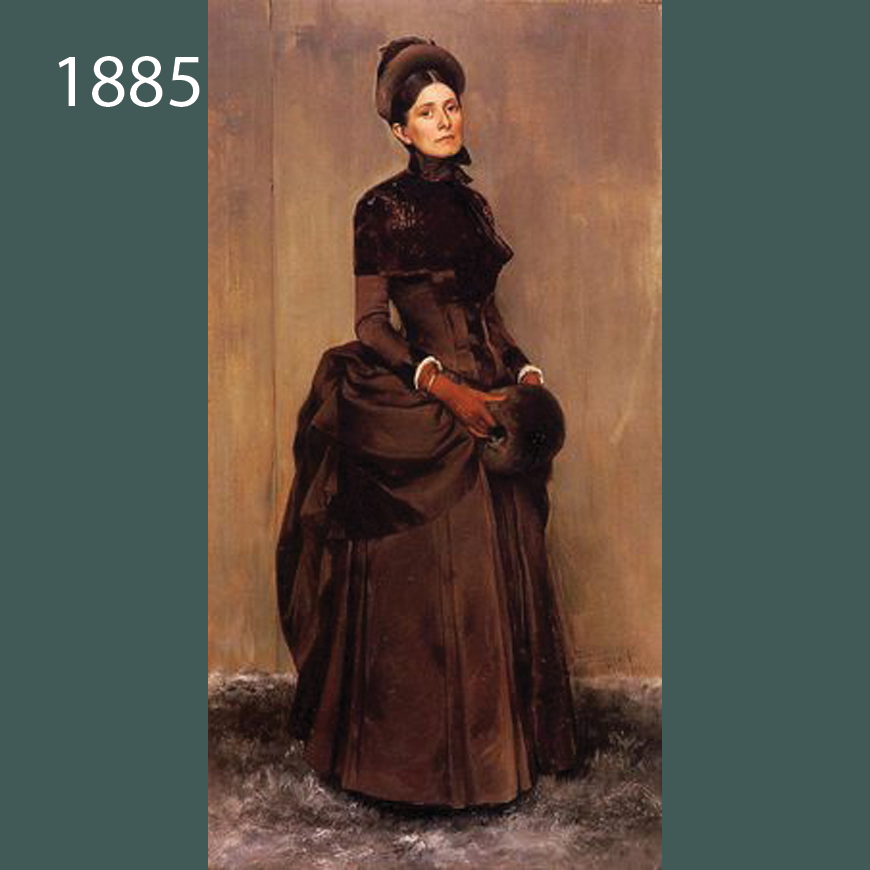
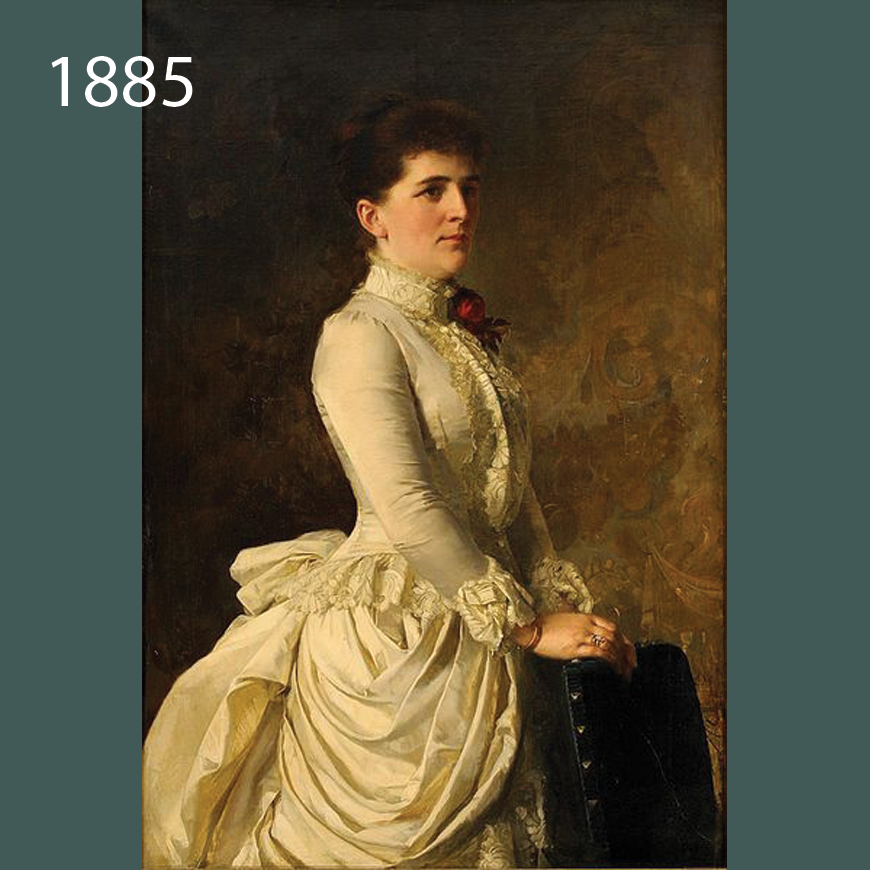
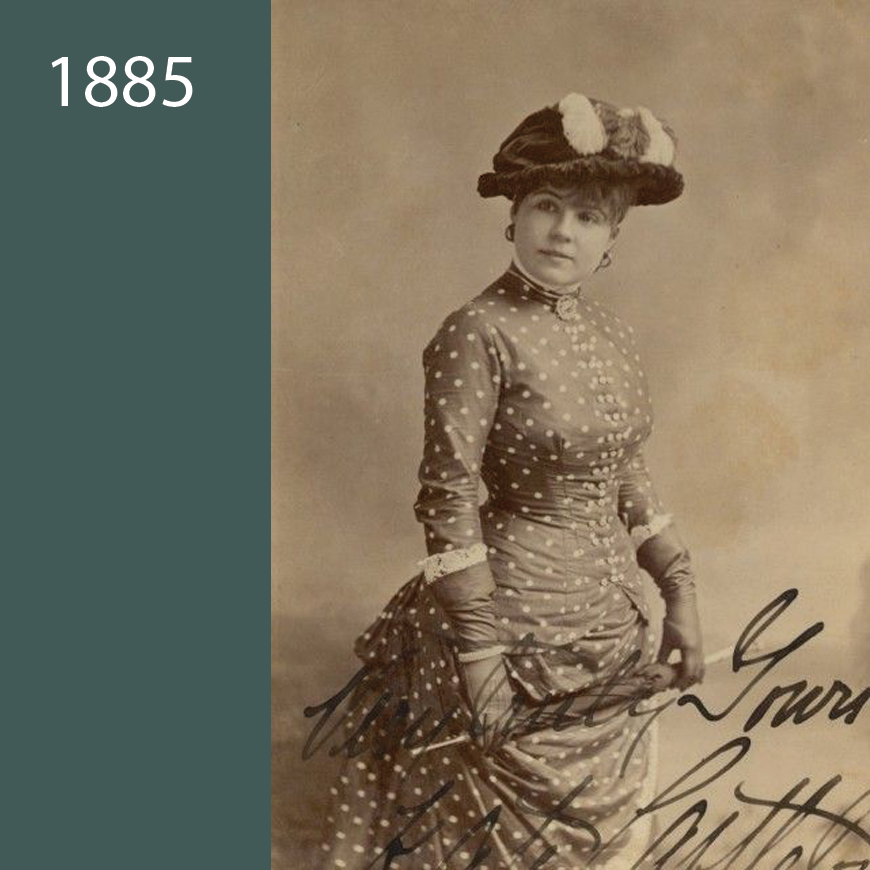
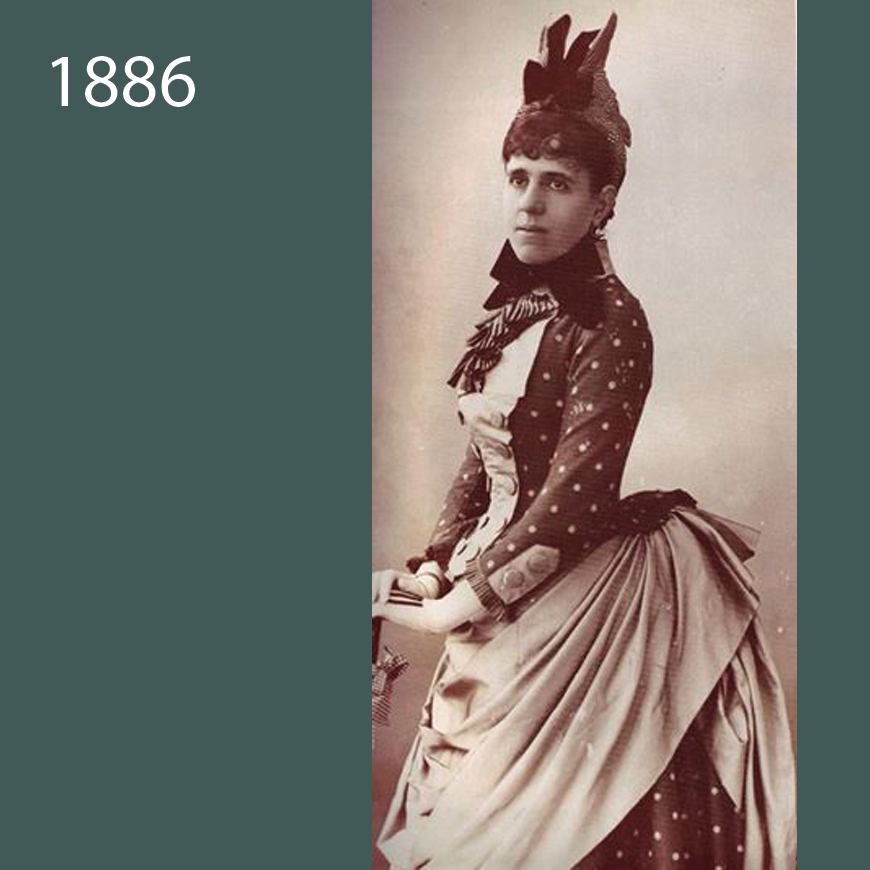
—— WORLD SITUATION ——
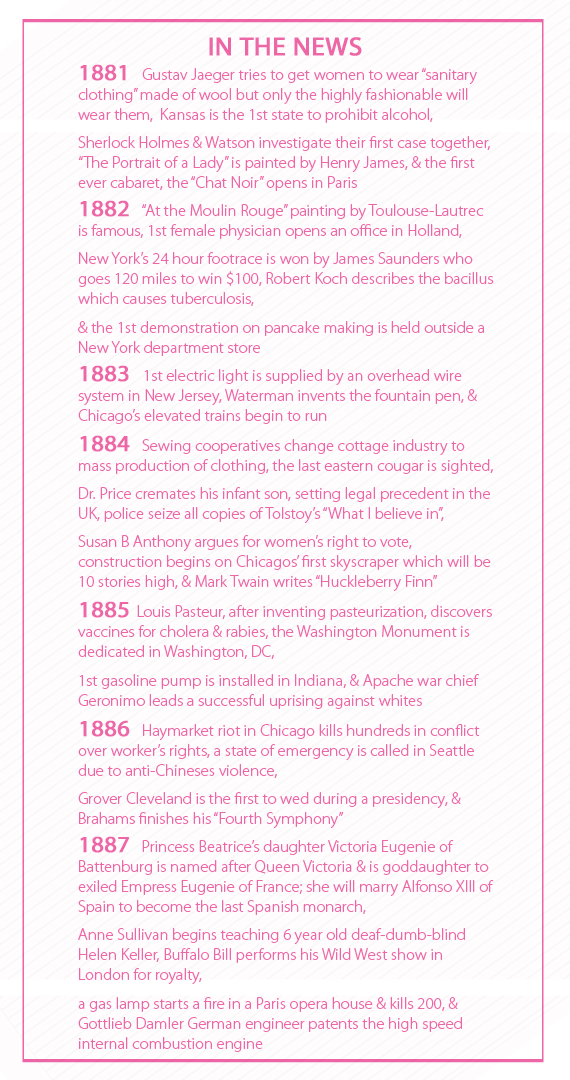
- France gave America the Statue of Liberty as a gift in 1886
- While conflict & independence over control of South American, African, & Pacific island territories continued for some, there was generally a sense of stability regarding the more powerful empires as boundaries had been established in Europe
- Communication & trade continued to increase between Europe, America, & Asia
- Countries were working on internal balance; e.g. American workers were rioting for rights, while the Netherlands were establishing policies for higher education
- Women’s rights were being openly discussed in America & England, with women attending universities to pursue professions such as medicine
- The first female medical school student graduated in Holland
- Monarchies were nearing their end of dominance, as other governmental structures were put into place
- Alfonso XIII of Spain would end the Spanish monarchy as one of the last remaining sovereigns in the world
- Gas & electricity were being installed through wires & distribution systems
- Electricity was used in manufacturing & transportation
- There were many fires & explosions around the world as gas & electricity were not quite safe yet
- The world of entertainment was evolving to include concepts & depictions of & by women, that would have been considered scandalous in previous eras
- Cottage industries changed completely to mass production except in cases of specialty production of goods & services
- Romance of the American West & adventure continued through literature & travels & investments by Europeans in American business & industry. These investments would lead to political change in America in the next century
- America’s world dominance as an innovator continued with construction of skyscrapers, elevated trains, & the fountain pen
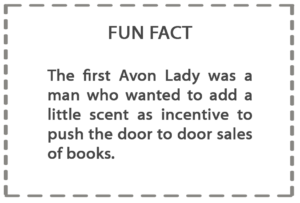
 —— INTERESTING FACTS ——
—— INTERESTING FACTS ——
- Women were more aware of the world around them & were becoming more independent
- Individualism demanded there be many choices for lifestyle & fashion
- The first Avon Lady was a man in 1886. He was a door to door book salesman who wanted to add a perfume gift as incentive to buy
- There were 3 directions for fashion: Mass produced, “Tailor-made”, & the “Aesthetic” & “Artistic” (“Dress Reform”) movements
 —— FASHION TRENDS ——
—— FASHION TRENDS ——
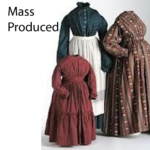 MASS PRODUCED
MASS PRODUCED
- Clothes of “regular folks” from this time forward were very much plainer than those found in fashion plates
- Even those who considered themselves fashionable or who had the money, still wore much plainer every day garments than earlier eras
- A study of history of fashion of this time means taking the “fashionable”, & simplifying it to the basic elements of line, silhouette, color, texture, & function which would have been the everyday norm for people of European or American influence
- Mass production of ready-made clothes flourished, so department stores & factories thrived, putting more women to work
- One worker might be responsible for attaching sleeves to the bodice over & over all day long, unlike prior eras when one worker would make the whole garment
- Many garment workers lugged their own sewing machines back & forth from the factory
- By 1900, piece-work was often farmed out to workers to do in their homes. The”bundle brigades” became a profession in themselves to transport finished pieces to the garment factories
- The term “sweatshop” came due to poorly lit & ventilated factories
HIGH FASHION TAILOR MADE CULT OF BEAUTY
- The “Cult of Beauty” (“Paris mainstream fashion”) which lasted until 1900 was the fashion “standard” of the day. It emphasized a return to very high hand-made quality, but dictated designs generated by professionals which varied from fashionable to practical
- English tailor-made was especially of high demand in America
- The return of tailor-made versus ready-made was largely due to the heavy marketing of couture houses such as Redfern in Paris
- Redfern’s designer at the time was an Englishman, Charles Poynter
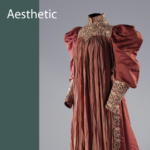 AESTHETIC & ARTISTIC DRESS
AESTHETIC & ARTISTIC DRESS
- The Rational Dress Society was founded in 1881 in reaction to the extremes of fashionable corsetry & undergarment structures such as the bustle
- The cause of artistic reform, started by the “Pre-Raphaelites” & “Aethetics” in previous eras (see 1852-1867), was picked up by the Council of German Women at this time
- This new “Aesthetic” movement greatly influenced the era & was of especial impact throughout the 1880’s
- In reaction to heavy drapery & rigid corseting of mainstream Paris influenced fashion, aesthetic dress focused on beautiful fabrics made up simply
- Both “Aesthetic” & “Artistic” dresses of the 1880’s & 1890’s appear outwardly to be much the same. The both included rejection of tight lacing, simplicity of line, & emphasis on beautiful fabrics
- Both “Aesthetic” & “Artistic” dress was based on a liking for Greek drapery & other costumes of the past with natural, flowing lines
- “Aestheticism”, however, had a philosophical purpose in rejecting the moral & social goals of the Victorian dress
- “Artistic” dress was just a fashion or style
- “Aesthetes” believed the role of the Arts was to provide refined sensuous pleasure, & to inspire emotion on the part of the observer & participant
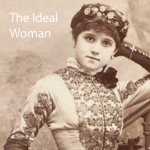 THE IDEAL WOMAN
THE IDEAL WOMAN
- The strong woman was the image of the day
- Mainstream fashion depicted the strong woman, & met her demands for intellectual & physical freedom through “Tailor Made”, “Ready Made”, & even “Aesthetic” fashion
- In the midst of this rising image of the strong, intellectual, innovative, & innate beauty, came a different type of feminine ideal
- The heroine of the day was a Dicken’s-like frail heroine who had minute hands & tiny feet
- She was quiet, calm, humble, & lived only for her man
- She didn’t have a chance
- Very quickly the full blown & powerful, outspoken, voluptuous, “Rubenesque” independent woman would knock the tiny pensive heroine off her pedestal
- The prevailing ideal of the long lean look of the 1870s & 1880’s became the ’80’s-’90’s big, strong, & curvy silhouette of the emancipated woman with the literal & figuratively broad shoulders
- There was an aggressiveness & rigidity about the new erect, square-shouldered female figure
- Her image seemed to demand freedom for women from whatever suppressed them
- The powerful image appealed to women
- In spite of the counter movements for softness, weakness, & submission, the strong woman prevailed
- The silhouette objective became the hourglass
- From a young age, women strove for the new ideal
- Girls were forced to walk with books on their heads & corks with needles sticking out around their necks to keep their necks long, their bodies strong, & posture perfect

—— SPECIFIC FASHIONS ——
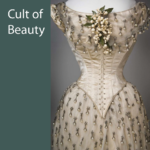 CULT OF BEAUTY/TAILOR MADE HIGH FASHION (“Aesthetic & Artistic” discussed above)
CULT OF BEAUTY/TAILOR MADE HIGH FASHION (“Aesthetic & Artistic” discussed above)
- The high fashion style of this era was severely tight with restrictive corsetry worn under dresses with long boned bodices, tight sleeves & high necks
- On the surface a very modest & even prudish look, this line was so torso defining that a woman’s shape could hardly go unnoticed, indirectly creating the most revealing & sensuous look yet in history
- Ensembles of this era were (& are) very expensive to make because of the amount of fabric, detail, structure, & expertise required
- The counter “Aesthetic” & “Mass Produced” movements were popular because they cost so much less & were so much easier to make than this mainstream fashion “Tailor Made” style
- By 1883 both day & evening clothes had become flamboyant, due to heavy decoration with drapes & frills
- Notable at this time were military dresses & “mannish” shirts with high collars the same as men were wearing at the time
- The line of the clothes was considered most important
- The Princess sheath garments had no waist seam. The bodice & skirt were cut as one, & the bodice line was similar to the very tight fitting cuirasse
- The cuirasse bodice was long & slim fitting in 1876 & by 1878 it reached the thighs
- The 1878 cuirasse was corset like & dipped deep in both front & back, giving the look of a body encased in armor
- By 1880 the ideas of the princess line merged with the cuirasse line to become the “Princess Panel Dress”. The result was a slim & elongated silhouette that was even further elongated by a train
- No bustle was used, although a pad was sometimes placed to help the fabric fall & drape correctly
- It took a very skilled dressmaker to get a flattering fit. Too often swathes of fabric were wrapped & arranged across the garment to hid poor sewing skills
- It was only suited to the very slim & women who did not have to work, so the fashion only lasted about 3 years
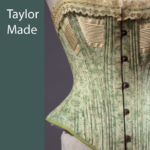 CORSETS
CORSETS
- Women were still very corseted & wired, with shapes specifically altering the body
- These corsets demanded expert tailoring construction as they defined the hourglass to the very end of the 1890’s
- The long corset put tailors back in business, although there was such a wide variety available on the mass market, custom made was not necessary, but desired as an option
- Corsets were very much mass produced & marketed largely through catalogs & department stores
- There were many styles of corsets for all activities, price points, & manufacture
- The most successful corset manufacturer was located in the United States
- Corsets of this era were still called “cuirass bodices” since they held the woman in a kind of body armor, not unlike ancient warriors. (The name “cuirass” is from the name “cuirbouli” or “boiled leather”, the process used by ancient Greeks & Romans to produce their rigid, thick leather fighting body armors)
- The long look was created by having each individual piece shaped for the long body contour desired for the purpose or individual
- Corsets of the 1890’s to 1901 were made of one single layer of coutil fabric
- Corsets of this era continued to get longer, & were very tightly laced from 1880-1890
- They had little separation of breasts, & created a low, full bust
- The spoon busk was nearly always used except in sports corsets. They widened out & then curved inwards towards the bottom in a spoon shape
- Spoon busks were used to hold the abdomen flat, & not create a bump in the smooth line of the front of the skirt. This became more important at the turn of the century, when the “tulip” flared skirt would become the vogue
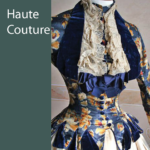 BODICES & JACKETS
BODICES & JACKETS
- From about 1882 the plain high-necked & tight-fitting day bodice grew shorter
- Bodices were severe & austere
- The pointed bodice was very tailored, similar to 1874, but was more of a suit now
- Bodices were cut to a point at the center front until 1885 when it was pointed in the center back also
- The bodice was by 1889 cut below the waistline
- Only the bodice or jacket was tailored now. The skirt remained elaborately draped to emphasize the tiny corseted waist
- For day wear most bodices had some type of center front interest
- Imitation blouse & revers were popular
- A rever was an insert sewn inside the bodice to appear to be a full blouse, similar to the visual effect of the chemisette (which was separated from the main garment as an accessory)
- Long, jacket-like fitted bodices called basques were popular for day wear
- Evening bodices were very plain & fitted; looking more like decorated corsets with small puff sleeves or decorated straps
- The decolletage on ball gowns was cut slightly wider & to a point at both front & back
 SLEEVES & COLLARS
SLEEVES & COLLARS
- Sleeves were the distinguishing characteristic of this era
- Sleeves started the era as the same 2-piece of the early 1870’s, having heavy cuff decoration, & getting slightly narrower by 1880
- Sleeves were plain & tight from 1880 to 1882
- From about 1882 onward a little fullness was being cut into the head of the sleeve
- Sleeves suddenly ballooned to proportions never seen before after 1883, reaching their peak of large size in 1895-96
- A set of Balloon sleeves on one garment could require up to 21 yards of 22″ wide fabric
- Women had to turn sideways to fit through doors to avoid crushing their sleeves
- Leg O’Muttom, Melon, Gigot, & Balloon were a few names given to the different shapes
- The head of the sleeve was often covered over by frills or a flounce or revers coming across from the bodice
- Sleeves were set into a high or normal armhole with the width at shoulder level rather than swelling from the low dropped armhole of the 1830’s when sleeves were almost this large
- Evening dresses of the mid 1880’s often had a lace flounce added above the sleeve to increase the impression of width
- Evening gowns sometimes had elbow length sleeves in the 1885-86 period
- By 1886 the sleeve gathers were lifted by a full pad to hold the size. They were stuffed with taffeta, paper, batting, & anything light enough with volume to hold them out
- As time progressed towards 1887, sleeves quickly became slimmer again & more plain & close fitting
- Evening & ball gowns were usually sleeveless & low necked throughout the era except for matrons who wore a higher neck
- Most necks were finished with a standing collar called an “officer collar” based on men’s military fashion of the day
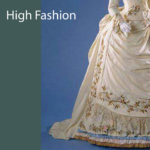 SKIRTS & TRAINS
SKIRTS & TRAINS
- As the 1880’s progressed, as in the previous era, emphasis remained on the back of the skirt, with fullness gradually rising from behind the knees to just below the waist
- Hips became more prominent in focus in 1881 & 1882, hinting at the larger bustle to come in 1883
- 1884 saw the simplification of ideas & plainer clothes
- The dress itself had minimal drapery throughout the era. Fabric drapery was neatly arranged in front of the dress like a small apron, but it was still very heavy with large amounts of fabric because the huge bustle required a very wide skirt
- Also like the previous era, focus was still on the skirt with its pleats, flounces, draped panier, or apron effects
- Due to so much draped & heavy fabric, dresses of this era could weigh 15 – 20 pounds, not including understructures
- Skirts were almost always layered & draped, often with an apron front & a trained back
- Pleating was everywhere, both in skirt construction & in trimming.
- There continued kilting, braiding, & other trim throughout, though not as much in combination or excess as the prior era
- Gowns typically did not have a long train in the back, which was different from gowns of the 1870’s
- Skirts were known as “hobble skirts” due to the tightness of them which made it difficult to walk, thus evolving the use of small pleats & flounces at the bottom so the feet could move
- While trains were no longer worn for day, they persisted for evening wear
- Trains were often a separate attachment which could be fastened under or draped at the back of the skirt
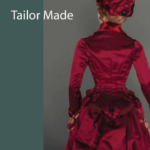 OVERSKIRTS & APRONS
OVERSKIRTS & APRONS
- The apron front was still popular from the 1870’s period, & was worn both centered or asymmetrically
- The apron was usually cut with a square-shaped corner at the bottom
- There was a virtually endless variety of method of draping & pleating & frills
- As the era progressed, hems came up, & clothing was designed to make the faster paced life more efficient & comfortable
- In 1886 skirts were more subdued, the drapes were less tortured
- The fabrics of several underskirts were pleated from the waist to fall to the hem in large flat pleats
- The overskirt was then draped up in the back over the bustle into large swags & waterfalls
- In 1889 pleats were 4-5″ deep & they were stiffened & grouped round the end of the point of the back bodice
- By 1889, the stiff pleats lifted above the bottom of the bodice at the back, as if in defiance of the demise of the bustle
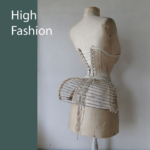 THE BUSTLE RETURNS – #3 – 2nd BUSTLE ERA
THE BUSTLE RETURNS – #3 – 2nd BUSTLE ERA
- The 1881-1883 period, situated between the two bustle eras, was known for being without bustle
- The fullness over the bottom in the absence of a bustle from 1881-1883, was balanced by a fuller, lower chest, achieved by rigid corseting creating an S-shaped silhouette
- The return of the bustle was marketed in Paris in 1880
- Brought back by popular demand in 1883, it was not embraced outside of France completely until 1885
- The return was gradual, & it is sometimes difficult to determine examples of the 1880’s since they crossed over the eras to include everything from no bustle to the 1st bustle “fishtails” to the huge 2nd era bustle all at one time
- All the bustles were worn to some extent through the period until the bustle abruptly disappeared completely in 1890
- The 1883 bustle returned changed from what it had been
- It was now worn at a lower placement with a narrower width
- This was a remake of the 1793 bustle, but in huge proportion
- Very different from the 1870’s bustle also, the 1885 version jutted out horizontally from the hollow of the back
- The bustle was very structured & the effect was accomplished with dress & ornament as well as understructure
- Dresses worn over this new frame were sturdier, being constructed in heavier fabrics such as velvet, satin, or wool
- This 2nd bustle was a “hard bustle” which could stand on its own rigidly horizontal
- It was larger than ever as a hard shape & looked like the hind legs of a horse
- A metal spring pivot type of bustle gave strong support for the larger & heavier skirts
- Its supporting structure became much more rigid & was made of metal bands which worked on a pivot
- The Lillie Langtry invented bustle model of this era could be raised when sitting, & spring back automatically when a lady stood up
- The large bustle reached its most aggressive form in 1886
- The late era 1884-86 bustle was very molded to the body
- Combined with heavier corsetry, the fashion gave an overall appearance of wearing armor due to its rigidity
- By 1888 the bustle was in decline, & by 1889 only a pad was used
- By 1890, it was abandoned all together
 UNDERGARMENTS
UNDERGARMENTS
- Drawers & chemises were combined in 1877 & called “combinations
- A combination was a camisole with attached knee or calf length drawers
- Combinations were worn under the corset, bustle, & petticoat
- Woolen combinations were recommended at the time for health, especially when engaging in fashionable sports
- They were sometimes high-necked & long-sleeved for day wear
- Daywear combinations were made of linen, merino, calico, or nainsook
- The petticoat was made to stay as flat as possible along the front to maintain the smooth line of the bodice
- Petticoats in this era were strictly inside garments under the skirt
- They were designed to follow the shape of the skirt
- Many had ruffles or flounces of self-fabric along the hemline and/or from waist to knee to hold the skirt away from the legs
- Because of the combination, there was not so much need for use of the petticoat for warmth or modesty as previously
- Some women did not wear petticoats of the dress fabric combined with the bustle was stiff enough to stand without one
- In the late 1880’s & 1890’s, the petticoat was more like a 2nd or 3rd skirt & less of an undergarment
- The design & manufacture of a late era petticoat matched that of the skirt as closely as possible, & might even be of a complimentary fabric to be seen as one of the outer layers of the dress
- By 1890 the chemise, drawers, & ruffled petticoats would be replaced by combinations entirely, because they reduced bulk around the waist where women were aiming for a completely smooth line from chest to knee
- Petticoats would later be called a “slip”; a long cotton or silk garment to keep the outer garment from chafing without causing bulk or bump to the silhouette
- They would eventually have one long line from neck to hem the same as the dress
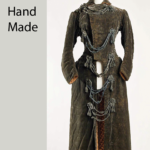 OUTERWEAR
OUTERWEAR
- Outwear evolved from the need for more active wear
- Riding habits had become a “uniform” of matching jacket & skirt worn with a high-collared shirt or chemisette, with top hat & veil
- Riding habits were worn without bustles, but the cut of the jacket still followed the silhouette of the day
- In contrast, hunting costumes adhered to current fashion complete with corset
- Hunting costumes had draped ankle-length skirts worn with boots or gaiters
- Other active wear included walking costumes consisting of a long jacket & skirt
- Walking outfits were worn for travel with a bustle & small hat or bonnet
- Travelers would also add dusters, an ankle length coat to protect their clothes from dirt, rain, & soot from trains
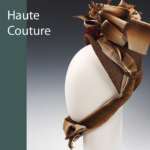 HAIR & HEADGEAR
HAIR & HEADGEAR
- Hair was pulled back at the sides & worn in a low knot or cluster of ringlets
- Later in the era, hair was swept up to the top of the head
- Women started to cut their hair, but only in front
- Fringe or bangs were fashionable throughout the period
- Bangs were curled or frizzled over the forehead & called “Josephine Curls” in reference to the 1800’s Classical Greek style
- Bonnets had curvy brims & resembled hats except they had ribbons tied under the chin
- The “Aesthetics” wore their hair long & frizzed
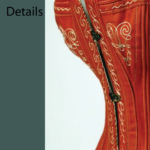 FABRICS, DETAILS, & ACCESSORIES
FABRICS, DETAILS, & ACCESSORIES
- Velvet was a very popular fabric in this period
- New light weight & soft wools were now being woven in mass production, & were favorites for winter or suitings
- Cooler cotton & linen were used for summer
- Colors were darker with bottle green, deep wine, navy blue & black coming to the fore
- Winter gowns were made in darker hues
- Summer gowns were of lighter colors
- Drapery fabric was thicker, harder, & considerably more rigid than in the 1870s
- Satin was popular. It was more crisp & rigid than we know now
- Evening gowns were worn with long over the elbow or shoulder length gloves of fine kidskin or suede
- Large hats, ornate jewelry, & parasols were worn with everything
- Boas were very very popular, & are usually what fashion historians use to depict the end of this era
- Boas were made of feathers, fur, or light fabrics. They were long “snakes” that wrapped around the neck multiple times
- The umbrella, while invented earlier, became THE item used by both men & women for everything from walking to self defense
- Choker necklaces & jeweled collars were fashionable under the influence of Alexandra, Princess of Wales who wore this fashion to hide a scar on her neck

—— ACTUAL GARMENTS OF END OF THE 1881-87 ERA ——
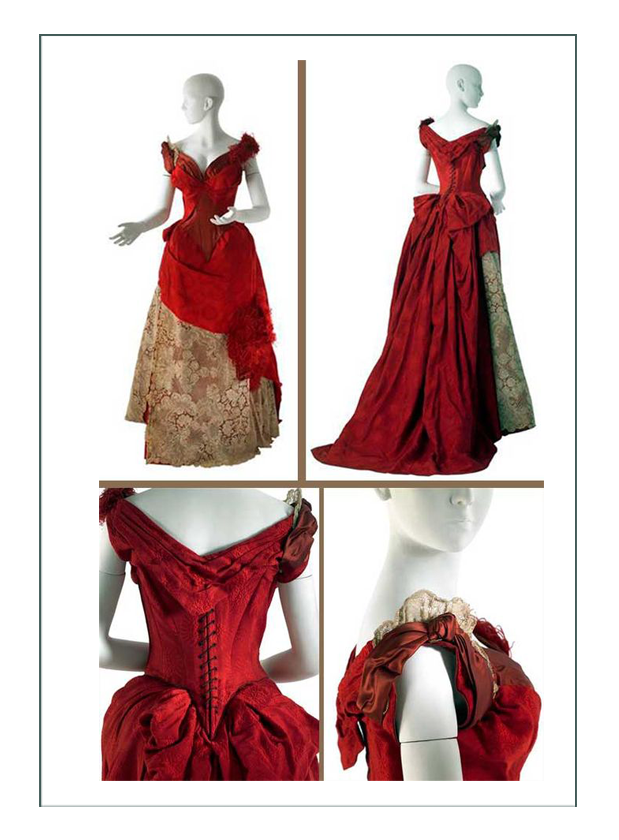
(above) “Court Gown (no Bustle; leaving Bustle 2 era) 1888″
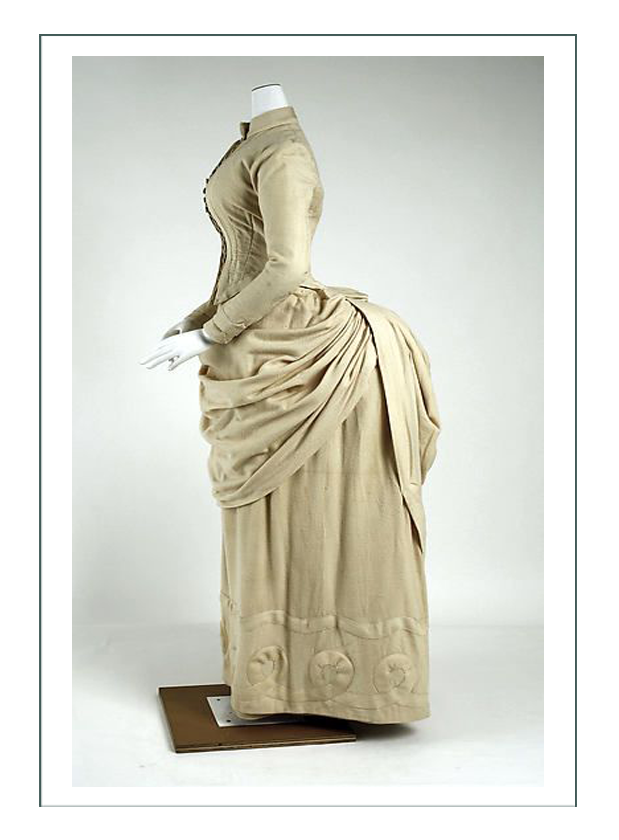 (above) “2nd Bustle Profile 1885”
(above) “2nd Bustle Profile 1885”
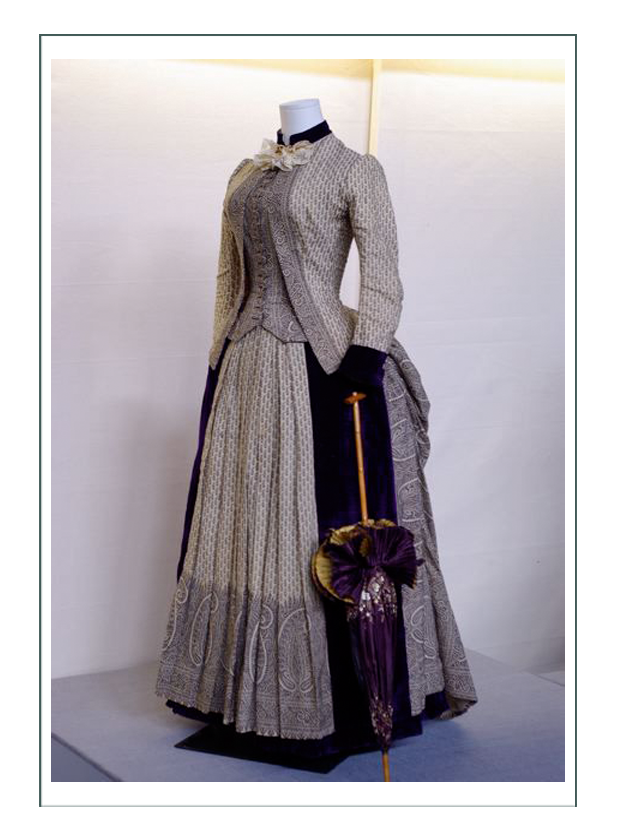 (above) “Paisley Wool Suit 1885”
(above) “Paisley Wool Suit 1885”
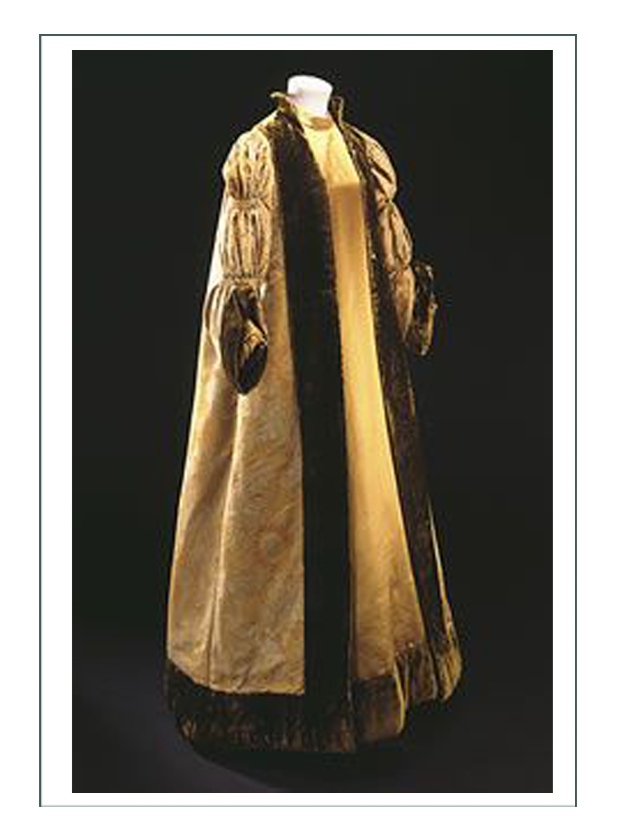 (above) “Liberty Aesthetic Gown 1886 est”
(above) “Liberty Aesthetic Gown 1886 est”
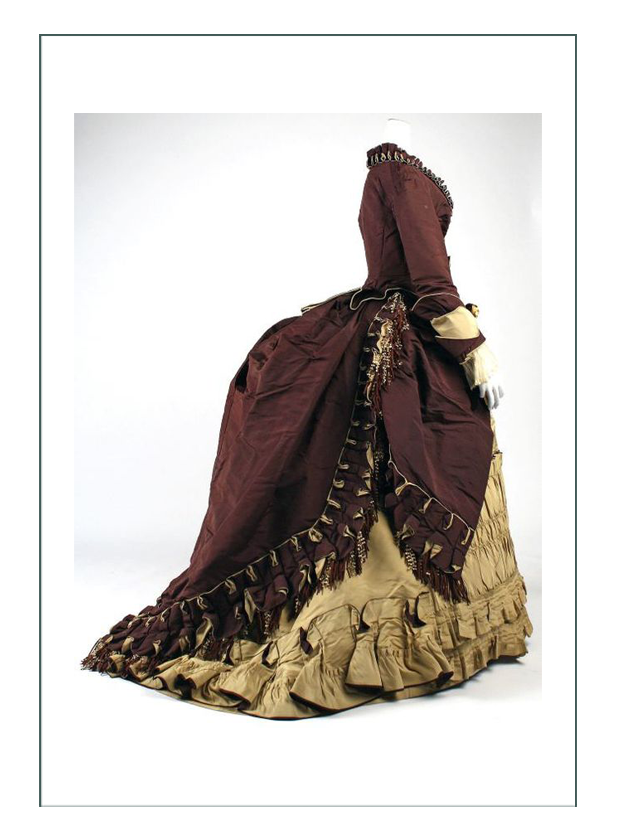
(above) “Travel Ensemble (Large 2nd Era Bustle) 1886″
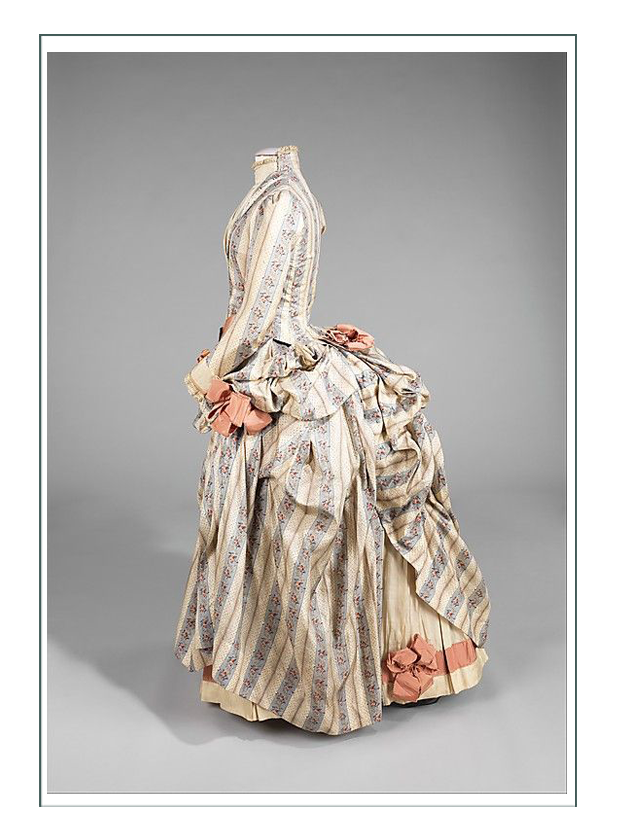 (above) “Afternoon Dress (2nd Era Large Bustle) 1886″
(above) “Afternoon Dress (2nd Era Large Bustle) 1886″
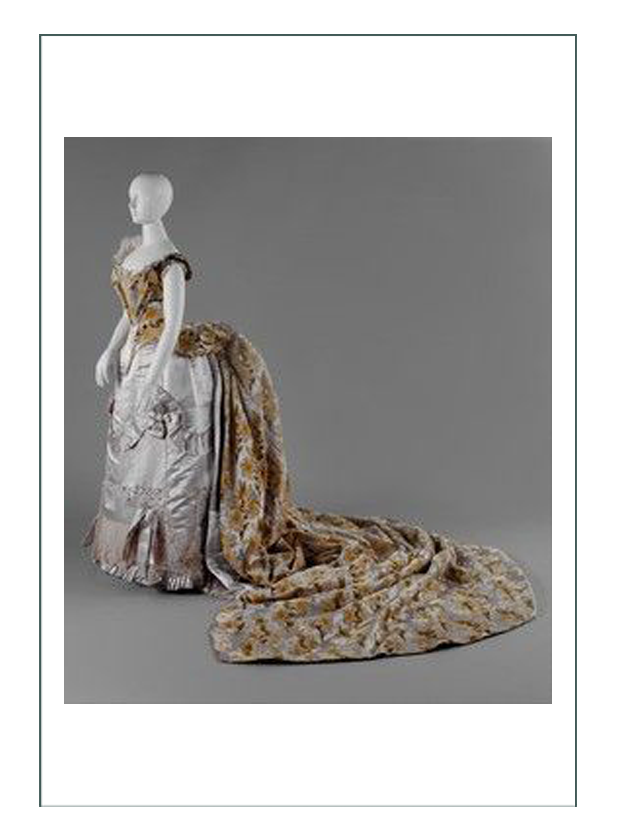 (above) “Last Bustle Before it Ends by Worth with Train “1887”
(above) “Last Bustle Before it Ends by Worth with Train “1887”
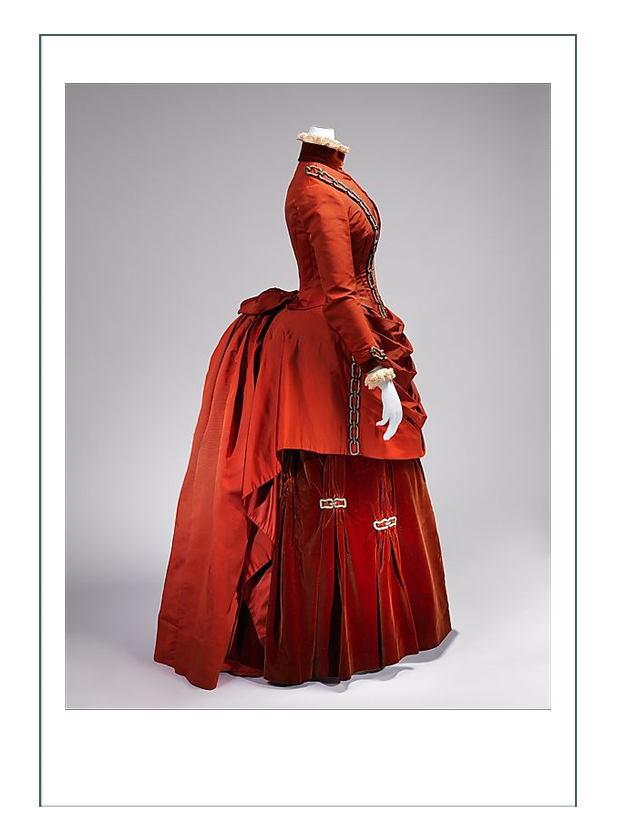 (above) “As Big as a Bustle Got (2nd Large Bustle Era) 1887″
(above) “As Big as a Bustle Got (2nd Large Bustle Era) 1887″
Beginning of 1888 into the “Naughty Nineties”
Strong women in a fast-paced world of work & play


—— BEGINNING OF THE ERA IN BRIEF ——
Science merged with fashion & everything was bigger in the ’90’s: bustles the size of horses, busts that threw one off balance, clouds of hair, & ideas that would change the world. It seemed powerful women needed BIG sleeves & tiny waists to succeed. Men & women were equal in that no one could figure out how to use the new-fangled contraptions that were being invented every day. Fast cars, tea parties, & fluffy afternoons in the park were the norm for some, while others spent their time in business meetings or riding a “Bicycle Built for Two”. The world was changing fast towards the new century when women would leave their subservient roles & their large bu-stles behind.
 —— PORTRAITS OF REAL WOMEN FROM THE ERA ——
—— PORTRAITS OF REAL WOMEN FROM THE ERA ——
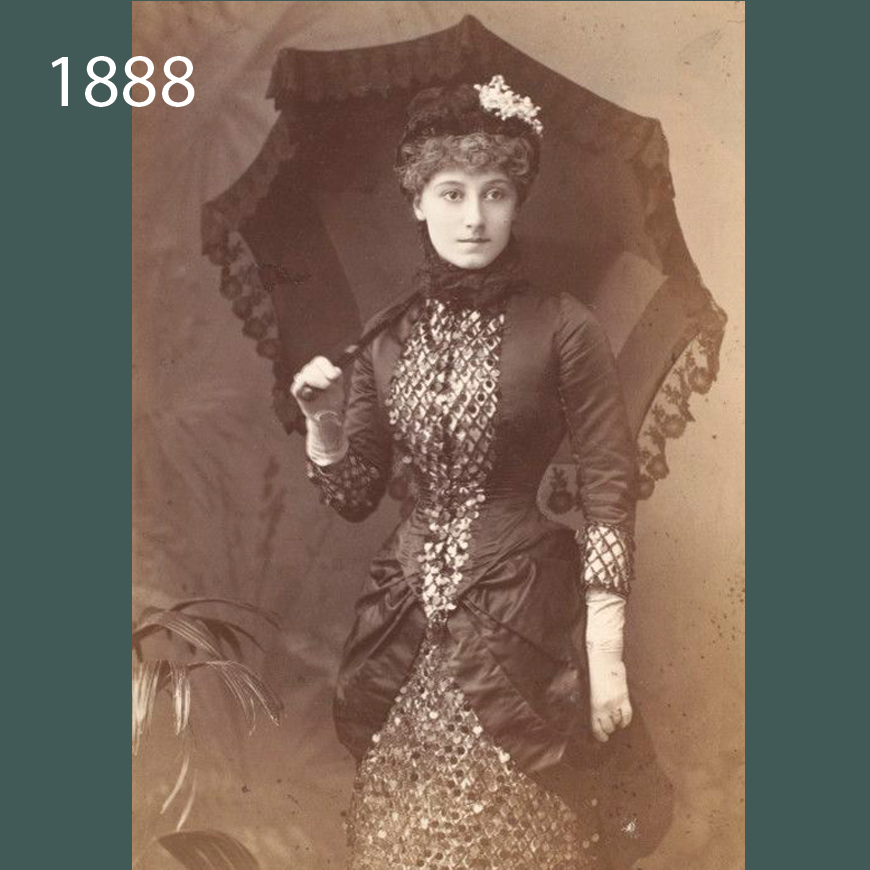
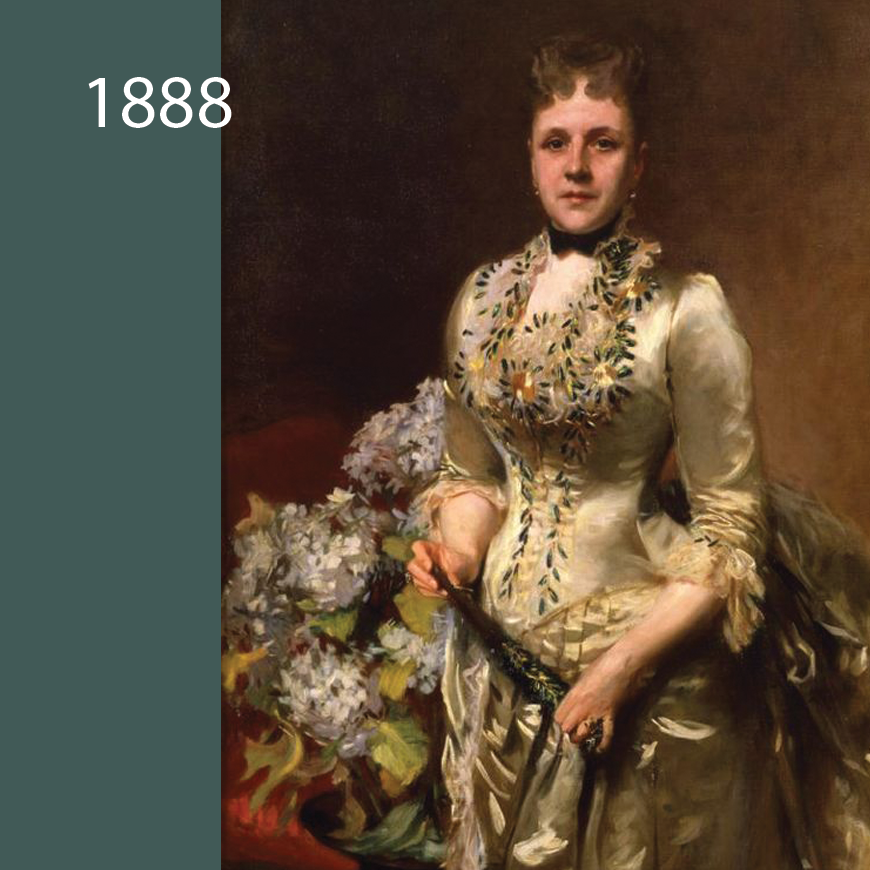
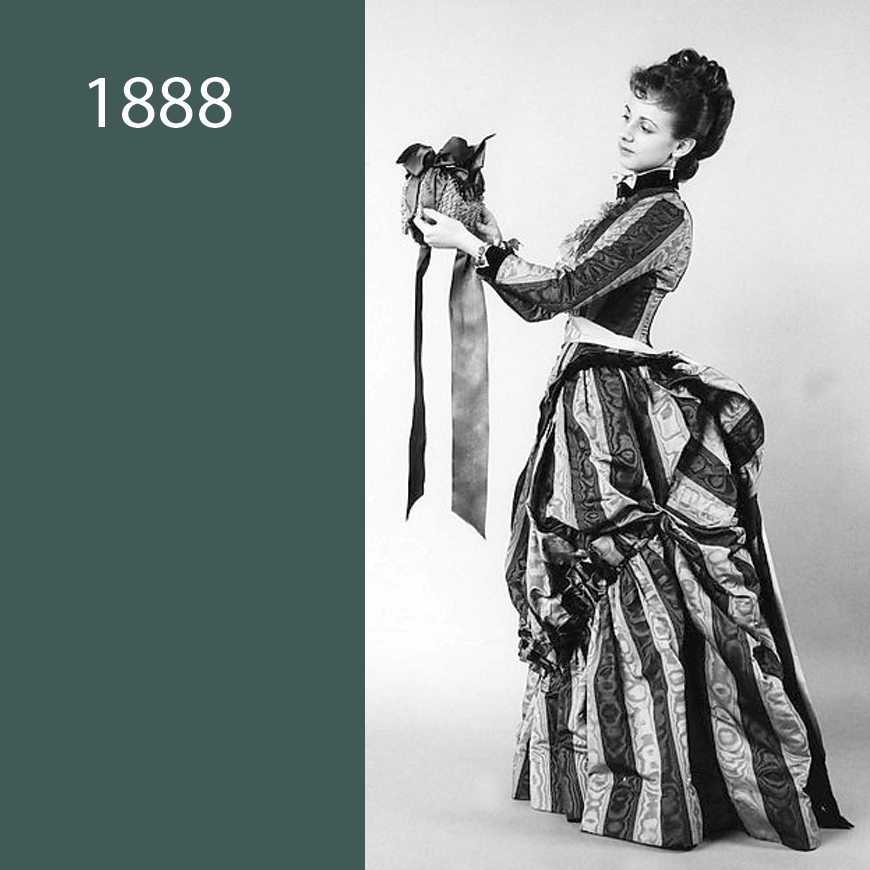
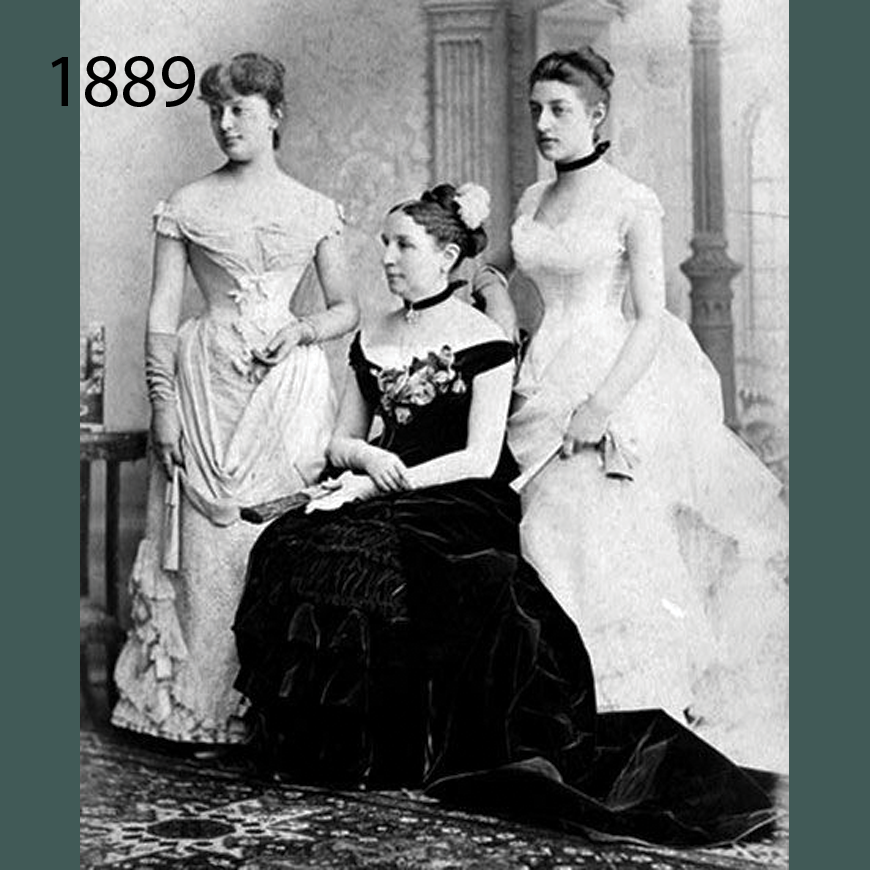
 —— WORLD SITUATION ——
—— WORLD SITUATION ——
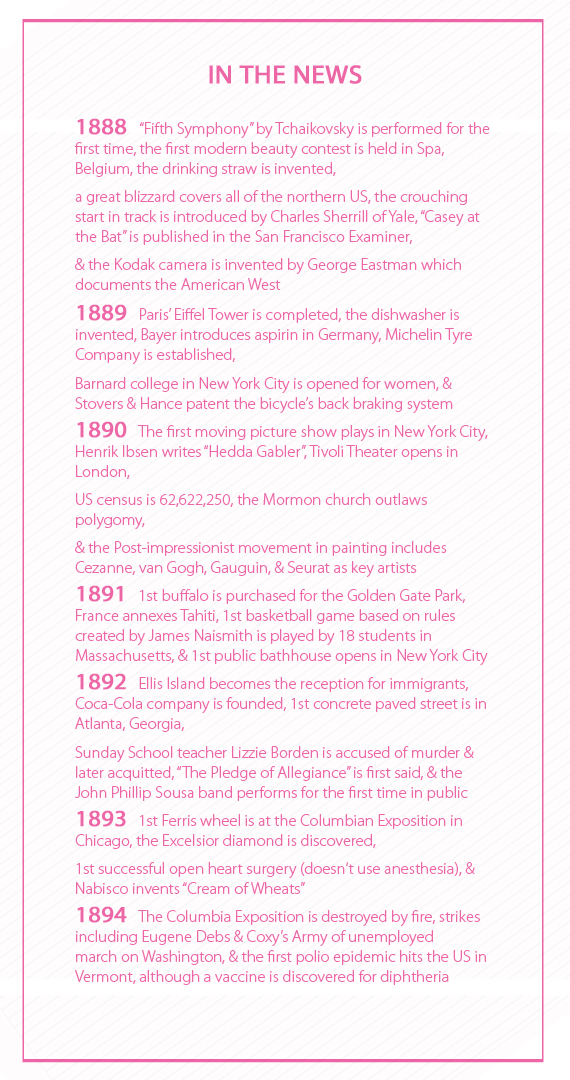
-
- By 1889, England & European countries were at war again, this time in Africa
- Conflict & change of power led to the start of the American-Spanish War
- The Philippines became independent of Spain, & China leased Hong Kong territories to the United Kingdom for 99 years
- College sports were invented for men & women including cheerleading for American football
- Sports were in great popularity
- Literature about sports such as “Casey at the Bat” was in great popularity too
- The Eiffel Tower was completed in Paris
- The Columbia Exposition in the US showed all the new innovations to the world
- A gold rush in the Yukon opened up exploration & trade
- Communication & trade continued to expand worldwide
- Literature & art expanded into new realms of thought such as “The Time Machine” & Impressionist painting
- The first modern Olympics were held in Athens
- Innovations continued including development of automobiles, fast ships,& machine guns
- Inventions kept coming, including the Ferris wheel, Kodak camera, & Bayer aspirin
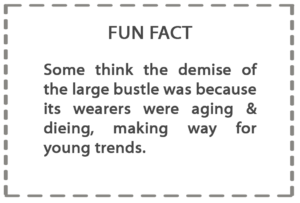
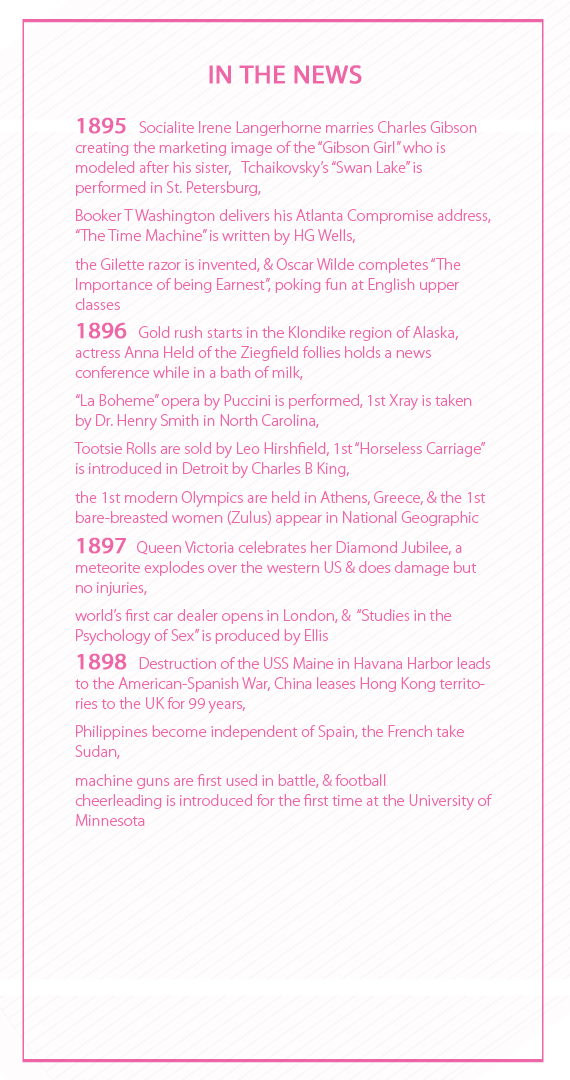
 —— FACTS OF THE TIME ——
—— FACTS OF THE TIME ——
-
-
- This time was yielding completely to the confident, strong, independent woman
- It was the transition between the Victorian era of restraint, & the loose fanciful life of the Edwardian
- The Victorian era had spanned 64 years, & changes in attitude were constantly shifting during that time
- Roles of women & women’s independence had somewhat paralleled the life of Queen Victoria herself who was crowned at age 18, & grew up during her reign
- The Edwardian era was named for Edward VII King of England who loved extravagant pleasures with balls, house parties, travel, athletics, & mobility
- Edwardian was defined by the laces, frills, & fluff of a FEELING
- In a fast-paced world of technological change, Edwardians tried to recapture a romantic & nostalgic past
- The era focused on a leisure class with leisurely pursuits
- Cars, races, & the drive towards women suffrage marked the time
- There was tea on the terrace alongside garden parties, regattas, & bountiful picnics
- Social & political structure was built on a rising middle class due to the industrial revolution
- The middle class “aped” the upper class
- Middle & upper classes had outfits specific to every occasion & activity
-
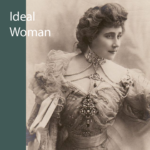 ROLES
ROLES
-
-
- The attitude of men in the period was highlighted by the author Tennyson who wrote of “women staying by the hearth with their needles whilst men wielded their swords”
- By the end of Queen Victoria’s reign there were great differences apparent between classes, & this could easily be seen by the garments they wore
- The Victorian head of household dressed his women specifically to show off wealth
- A wealthy woman’s day was governed by rules of etiquette requiring up to 6 wardrobe changes a day, & 3 seasons of change
- Fashion plates were keys to give visual clues about how to dress for status
- For the very poor of Britain things were quite different. For them, 5th hand clothes were typical, as the average poor mill worker could only afford the food left over from a rich household, & survived on inferior meats, tainted breads, porridge, cheese, herring, or kippers
- The most acceptable career for all women was still marriage
- For the upper classes & rising middle class, to prepare for courtship, the typical girl was groomed like a racehorse
- She was required to sing, play an instrument, speak French or Italian, & to be innocent, virtuous, biddable, dutiful, & ignorant of intellectual opinion
- Women were expected to remain within marriage or outside of it as weak & helpless as a delicate flower incapable of making decisions beyond selecting the menu & ensuring her children were taught moral values
- A gentlewoman ensured the home was a place of comfort for her husband & family, away from the stresses of an industrial world
- An Edwardian woman’s prime use was to bear a large family & maintain a smooth family atmosphere so a man need not bother with domestic matters. He assumed the house would run smoothly so he could spend his focus on making money
- A wealthy wife was supposed to spend her time reading, sewing, receiving guests, going visiting, letter writing, seeing to servants, & dress the part of her husband’s social representative
- Even in high society, men kept mistresses, yet their wives were expected to be faithful no matter what
- If a woman took a lover, it was not made public, or she would be cut out of society
- Men could have a mistress & be warmly welcomed everywhere
- It was a hypocritical period when relationships were artificial until 1887 when the Married Woman’s Property Act gave women the right to own property
- Before the Act, anything a woman owned became her husband’s at their marriage, including herself
- If a wife separated from her husband, she had no rights of access to see her children, & no chance of acceptance in society ever again
- The Act changed all of that
- Fashion history usually depicts the style of those with wealth, & who met these cultural standards, showing typical excessive elements such as tiny V waists, layering of trims, & gigantic sleeves
- As the 1880’s progressed, dress became more & more lavish until clothing was nearly buried by lace & beading at the turn of the century
-
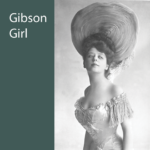 YET ANOTHER IDEAL WOMAN EMERGES
YET ANOTHER IDEAL WOMAN EMERGES
-
-
- The Gibson Girl the new ideal woman. While models were found to depict her, she never really existed
- This imaginary woman had large bosoms & hips, snub nose, small mouth, & upswept full hair
- The Gibson Girl was almost a merge of the extremes of the bustle era with all its draping, folds, & fuss, the Edwardian concept of the “Grand Dame” with her lace & tea, & the smooth lines of the natural forms & frizzy hair of “Aesthetic dress”
- The Gibson Girl image of the 1890’s combined elements of older images of caucasian female beauty: the “fragile lady” with slender lines & a sense of respectability & the “voluptuous woman” with large bust & hips who was never vulgar or lewd
- She was refined in beauty, spirit, & was calm, independent, confident, & sought personal fulfillment
- Portrayed at ease & always stylish
- She was often depicted attending college & vying for a good mate
- She would NEVER participate in the suffrage movement
- A member of upper class society
- More athletic-shaped; she was often depicted cycling in Central Park
- She exercised & was emancipated to the extent she could enter the workplace
- She had an exaggerated “S” curve torso achieved by wearing a swan bill corset
- The Gibson Girl Preoccupation with youthful features & ephemeral beauty
- She had a thin neck & her hair was piled high on her head in bouffant, pompadour, or chignon “waterfall of curls”
- The new image would be rehashed in each generation, eventually evolving into the “girl next door”, a national standard of wholesome beauty by standards of the ideal femininity of the time
- Of course, the Gibson Girl was invented by a man
- He created her based on his sister, & marketed the idea very successfully throughout the world
-
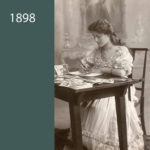 SCIENCE IN FASHION
SCIENCE IN FASHION
-
-
- Scientific study of the human body called “anthropumetrics” had changed the design of drafted patterns so they could be standardized
- Women could now successfully sew garments in the home
- Catalog & department stores could make multiples in sizes for true “off the rack” or “ready made”
- Growing urbanization & rapid growth of technology included improvements in city living conditions
- Designers, builders, & manufacturers used “proportionate systems of measure” which applied to the fashion industry too
- In 1884 Dr. Jaeger, a German professor of Zoology in Germany, developed scientific theories about the hygiene of dress, & recommended the wearing of only wool next to the body
- Dr. Jaeger promoted the use of natural fibers in everything in the household to “prevent retention of noxious exhalations of the body”
- Science at the time was equated with being modern, & therefore regardless of Dr. Jaegers lack of scientific data, his research became the foundation for “dress reform”
- This led to many wool garments being produced in a range of colors
-
 ART IN FASHION
ART IN FASHION
-
-
- Oscar Wilde, philosophical writer of 1894 said “one should either be a work of art, or wear one”
- He also wrote “fashion is a form of ugliness so intolerable that we have to alter it every six months”, “Fashion is what one wears oneself & what is unfashionable is what other people wear”
- Wilde & his wife promoted a return to natural forms of the “bohemian” style which had been introduced in the previous decade through “Aesthetic”, “Artistic”, & “Pre-Raphaelite” movements
- It was now called “Rational Dress” or “Dress Reform”
- The “Aesthetic” & “Art” movements of the last era were still in full force too
- The 3 concepts would lead to the “Art Nouveau” style of the next era
- Officially “La Belle Epoque” era was 1890-1914, so the influence of that high fashion style begins at this time (discussed as a separate era here)
- Magazines & catalogs dictated fashion
-
 —— FASHIONS & TRENDS ——
—— FASHIONS & TRENDS ——
-
-
- During these years the picturesque “Directoire” style evoking the late 1700’s & early 1800’s was revived
- Directoire elements included tailored redingotes cut back to expose a contrasting skirt, embroidered & brocaded vest effects, dresses with empire waists, & puffy fichus
- There was also an increasing emphasis on fancy sleeves
- This trend was inspired by the 1830’s which were in turn inspired by the 16th century Middle Ages
-
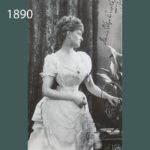 SILHOUETTE
SILHOUETTE
-
-
- Fashion of the 1890’s is overall characterized by long elegant lines, tall collars, & the rise of sportswear
- “Rational Dress” for women’s health was widely discussed in 1891, which led to the development of the sports dress
- Both the extremely tight & fitted corsets & fussy bustle styles existed alongside the rise in “naturalness”
- The silhouette progressively deflated from that with had considerable back fullness & puffy draperies, to the narrow one of the early 1890’s
- Foreign fashion brought influences, especially the red tunic, the “curiass” bodice, & the “prussian” very high neck collar
- The 1890’s were an era of great dress reforms with unfussy, tailored clothes, adapted from the earlier theme of men’s tailoring
- The sharper tailoring of the era, combined with gigantic sleeves & huge hats, gave women a posture that made them look more confident to reflect the ideal of emancipation
- They also put women off balance
-
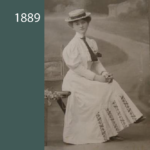 SIMPLICITY & FUNCTION
SIMPLICITY & FUNCTION
-
-
- Simplicity of form was apparent in clothing worn for outdoor activities & travel
- Women were earning their living as governesses, shop assistants, & typists
- The working woman embraced the tailored coat & skirt later called a “suit”
- The shirtwaist, a costume with a bodice or “waist” tailored like a man’s shirt with a high collar, was adapted for women’s informal daywear, & became the uniform of working women
- The tailor-made woman’s suit of the 1890’s had a 3/4 length jacket, wide revers, enormous sleeves, a plain skirt that reached to instep or ground level, & might also sport a waistcoat
- Later in the era, & despite intensive marketing of French fashion houses through magazines & American periodicals to keep it out, the tailor-made suit elevated the combination blouse (“shirt waist”) with skirt into high fashion
- The “suit” had come to be accepted in all venues from walking to work to high tea
- The 1890’s suit had a somewhat masculine style which reflected the working woman’s desire to look smart, but to also increase their ability to be active, or to create the appearance of being active
- Walking Suits featured ankle-length skirts with matching jackets
- The blouse, worn with the suit or without, became popular in 1894
- It was caught in at the waist with a fixed belt, & then a short peplum would extend under the belt
- Ready-made blouses could be bought in great variety from very masculine to dressy for formal wear
- Most of them, with the new scientifically based sizing systems, actually fit
-
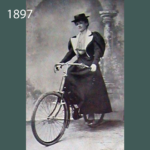 SPORTS
SPORTS
-
-
- Sports dresses included ample skirts with belted blouses
- In the United States, bloomers were used more for exercise than fashion
- American women were the first to embrace bloomers. Necessity of living, especially in the frontier west, had women already wearing men’s clothing, so it was not a large leap from skirt to pant
- The rise of American women’s college sports in the 1890’s created a need for unencumbered movement
- By 1900, all American women’s basketball teams were outfitted in bloomers
- On college campuses, bloomers were paired with blouses to make the first gym uniforms worn in public by women
- Bicycling was THE most popular sport. Groups were formed, including bicycles built for two (tandems)
- Sundays were often spent with whole families cycling together
- Skirts had to be shorter, or be able to lift up to get on a bike
- “Cycling Costumes” had shorter skirts with bloomers or Turkish split trousers
- That women could bicycle in huge skirts was as amazing as that they could climb mountains in bustles, which they did at this time
- By 1890, while American women had already embraced them, women of England, France, Germany, & the Netherlands gave in to the need for some sort of split garment
- They picked up the previously discarded Bloomers
- Bloomers were a type of “knickerbocker” (“knicker”) modest pantaloon named for their inventor Amelia Bloomer in 1850
- Amelia’s original design had been what she called “baggy pantaloons” which were worn beneath a tunic that reached to or above the knee
- Ms Bloomer was part of the Dress Reform movement, & she was highly ridiculed & caricaturized
- With “Dress Reform” gaining popularity, & the need for cycling apparel, people finally stopped laughing at her
- The “Rainy Daisy” was a type of walking or sports skirt introduced in the 1890’s
- The “Rainy Daisy” was named after Daisy Miller, leading character of a book by Henry James published in 1879. The book tells the story of a young American woman traveling in Europe, who is courted by Frederick Forsyth Winterbourne, an American living abroad. It deals with prejudices & the differences between social cultures of America & other countries
- The “Rainy Daisy” was known for practicality in wet weather, as the short hemline kept the skirt out of puddles
- These were worn for all sporting pursuits & bicycling
- The bathing costume was perhaps the greatest innovation of the era, however
- Ensembles were made from grey serge, a fairly heavy wool, in one piece with top & drawers (knickers) with a belt so that it would not reveal the body
- Bathing costumes were so ponderous women would sink
- Eventually a knit suit was developed so a woman could actually swim
-
 —— FASHION SPECIFICS ——
—— FASHION SPECIFICS ——
-
-
- Some think the demise of the bustle was because it’s wearers & fans were aging & dieing
- Afternoon dresses typical of the period had high necks, wasp waists, puffed sleeves, & bell shaped skirts
- Evening gowns had squared decolletage, wasp-waisted corsets, & skirts with long trains
- Evening & ball gowns were worn with or without trains
- Walking suits had short skirts & matching jackets
- The bustle was gone entirely by 1890
- Only a small pad to lift the rear skirt fabric was left by 1893
- Gathers at the back of the skirt remained until 1900
-
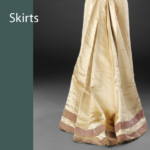 SKIRTS & SUPPORTS
SKIRTS & SUPPORTS
-
-
- In 1885 the skirt had become very stiff, fitting over the hip & shaped into thick umbrella-like pleats
- The shape of the skirt then gradually became a slimmed down version of that through the end of the 1880’s
- By 1890, skirts fell naturally over the hips
- Skirts changed through the period from the wide, horse hind shape to a gentle & graceful bell or “inverted lily flower” which fit closely over the hip, & then flared just above the knee
- The skirt continued to widen & flare as the fullness of the bustle began to fall into pleats instead
- All the fullness that had been draping the bustle disappeared in favor of a smooth line
- Skirts widened in a straight line after the hips to the start of the hem flare
- Skirts were gored & not gathered nor pleated to give a fairly close-fitting effect over the hips
- Some cartridge pleating from the waistband was retained at the back along with some padding to make the hips appear rounded, although it was no longer fashionable to have large hips
- By 1894, skirts were relatively free of decoration
- After 1894, decorative panels extended from the bodice & continued down the skirt with braid or fringe on the edge of each panel
- Different from the simple trims & pleats of the English & American, French gowns were always richly embroidered or trimmed
- By 1899 the flare in the skirt was more pronounced & dramatic
- The bottom of some skirts was cut as a shaped flounce; a design that would carry into the 1900’s
- As skirts became plainer, the tight high-necked, high-busted, & long-waisted bodices became more ornate
- Many skirts had trains for both day & evening wear
-
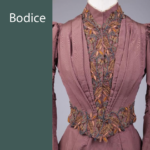 BODICES & JACKETS
BODICES & JACKETS
-
-
- Dresses of the early 1890’s had tight bodices that were gathered at the waist
- After that, bodices began to have even more fullness at the front, which would develop into the pigeon breast or monobosum of the early 20th century
- By 1897, most bodices were gathered evenly all round at the bottom & had a belt which mostly went straight around
- The belt sometimes dipped at the center front
- Bodices had lace jabots & frills including cross-overs or epaulettes of military influence
- Increasing width at the shoulder was balanced by adding width at the hemline
- The bodice shape hardly changed until after 1907, so there was a basic bodice design from which all others just varied
- Bodice variations included square or round necklines
- Necklines rose even higher through the era, supported by very high boned collars
- Special devices were invented to hold collars & peplums to shape. Most of these were wired
- Peplums of various lengths were popular on the bottoms of bodices & jackets in 1894-95
- Peplums were short gathered “fan” like folds of fabric which covered the top of the skirt
- They were faced with silk taffeta so the jacket would slide smoothly over the skirt without riding up
- The Zouave jacket, still popular from the 1860’s, became more tailored at this time
- The bottom of the Zouave was square or rounded
- It fastened across with frogs or tabs, & was worn open or fastened
-
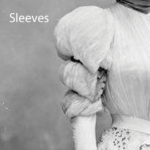 SLEEVES
SLEEVES
-
-
- By 1889 sleeves were huge & needed support
- By 1894 the sleeve puff had become enormous, & the fullness dropped level with the shoulders rather than going upwards as in the previous era
- 1895 sleeves were huge with stuffed Melons, Balloons, & Legs o’Mutton styles
- Sleeves got bigger & bigger until they disappeared in 1896 with the more proportioned styles of “La Belle Epoque”, “Art Nouveau”, & late Edwardian
- The gigot sleeve had also declined in size & popularity by 1897
- The new sleeve of 1898 was more slender, & the head was cut with a built-in puff
- Sleeves got slimmer in 1899
- 1899 sleeves were tight at the wrist & had small puffs or ruffles capping the shoulder. The head still had some fullness
- Late 1890’s sleeves had ruches from wrist to armhole, which looked like wearing bandages
-
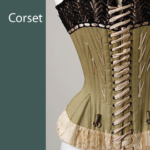 CORSETS
CORSETS
-
-
- The early Edwardian corset is the same as the prior era, except that the bones did not follow the seams of the pattern pieces because the aim of the Victorian period was to smooth out the line of the body, while the Edwardian was to emphasize waist & hips
- Although not intended to be visible like stays of the 18th century, corsets of the 1880’s to 1890’s were elegant & beautifully made
- Black sateen was sewn with yellow, blue, pin, or green decorative machine stitching, & then embroidered by machine or hand
- A wedding corset might be of white satin embroidered with orange blossoms
- Being cut with separate hip pieces, the 1890’s corset results in a “nipped in” waist appearance
- The rib cage was resultingly compressed so the hip bones protruded
- It was arranged in such a way that when the stomach was pushed in, the whole torso tipped forward
- By the end of the era, heading into the Edwardian period, corsets & the body became elongated to an “S” curve that carried forward into the 20th century
- A woman of the time described how it felt to wear the current corset fashion: “although perfectly straight & well made, I was enclosed in stiff stays, with a steel busk in front; while above my frock, bands drew my shoulders back till the shoulder-blades met. Then a steel rod with a semi-circle, which went under my chin, was clasped to the steel busk in my stays. In this constrained state I & most of the younger girls had to prepare our lessons”
-
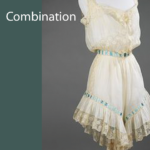 UNDERGARMENTS
UNDERGARMENTS
COMBINATIONS & DRAWERS
-
-
- Throughout this period women’s underwear became more elaborately trimmed & progressively prettier & more alluring
- The decorative period culminated in the 1890s with ‘frou-frou’ petticoats
- By 1890 the chemise & drawers were almost completely replaced by combinations because they reduced bulk around the waist
- A combination was a camisole with attached knee or calf length drawers
- Combinations were worn under the corset, bustle, & petticoat
- By 1899 some drawers were wide-legged & flared
- The drawers, called “knickers” in reference to the previous era’s bloomers were worn
- Whether wide or narrow legged drawers used flat lace, inserts, or ribbon on the hems so as not to disrupt the line of the dress instead of ruffles & edging trims of the past era
- Knickers were split at the crotch
- They had a straight or slightly “v’d” or dropped waist band to keep the front waist area flat
-
CAMISOLES, CORSET COVERS, & VESTS
-
-
- In the 1890’s a short-sleeved or sleeveless under-bodice & over corset light muslin or silk blouse called a camisole was worn
- When a chemise or camisole was worn, knickers were worn instead of the combination
- The corset cover, camisole, or petticoat bodice was worn over the corset to protect the tight fitting dress from being damaged by rubbing
- By the 1890’s, corset covers or camisoles were sleeveless & very glamorous with frills, tucks, lace trimmings, & ribbons
- Undervests of colored washable silk with shaped gussets for breasts were worn under the corset to absorb sweat & prevent chafing
-
CHEMISES
-
-
- By the end of the century, the chemise had become a very simply cut, sleeveless garment with narrow shoulders
- The chemise had a round, square, V or heart-shaped neckline
- It was very highly decorated with lace & embroidery & was made of fine cotton, linen, or silk
- A separate type of chemise was worn with evening sleeveless, decolletee dresses
- The evening chemise was cut straight across the top, with separate narrow shoulder straps, a style that would remain popular into the 20th century
-
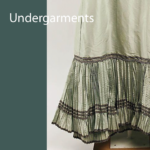 PETTICOATS
PETTICOATS
-
-
- The petticoat was made to stay as flat as possible along the front to maintain the smooth line of the bodice
- The triangular silhouette of the gored petticoat was further emphasized by a lace-trimmed frill at the bottom
- As skirts softened in outline in the late 1890’s to give a curved flare below the knee, petticoats followed the shape
- Petticoats often had circular flounces at the bottom
- This straight, curve, flare, & flounce line would characterize skirts & petticoats until about 1914
- Stiff silk or alpaca petticoats were worn as well as cotton
- Flannel was still used for petticoats, although it was sometimes too bulky for the slim line of the style
- Silk petticoats produced the characteristic rustling sound that marked the ’90’s era
- The silk rustling sound was called “frou-frou”
-
AND MORE
-
-
- The Dress Reform movement, wanting to reduce the number & weight of garments a woman wore, took the concept of the combination to create a “combination divided skirt”
- This was the chemise & drawers combined as seen in the regular combination, but it had also had long wide legs that were intended to replace the petticoat as well as provide service as the underdrawers
-
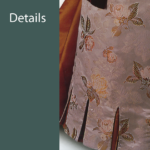 FABRICS & MATERIALS
FABRICS & MATERIALS
-
-
- Lace, gauze, a thick silk (mousseline de soie), ribbon, silk chiffon, tulle, crepe de chine, & specially made lacy details were used
- Designs from French couture houses had extravagantly expensive elaborate gowns in velvet or satin
- Gowns of the late 1880’s were almost always made of 2 colors of material
- As in the past era, vivid colors produced by the new & innovative dye processes such as deep red, peacock blue, bright apple green, royal blue, purple, mandarin, sea green were used along or in combination with tartan fabrics
- Some color combinations were very strange
- At night ladie’s evening dresses were of softer hues & were extravagantly trimmed in contrasting fabrics with much ornamentation at the neckline
- Women wore pastels for day or evening
-
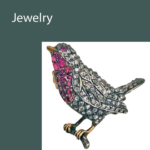 JEWELRY & ACCESSORIES
JEWELRY & ACCESSORIES
-
-
- Matching jewelry included work of Renaissance, along with Greek, Egyptian, & other ancient societies
- There were corals & cameos of many many designs used in brooches, earrings, necklaces, & pins
- Cameos were small motifs of people & animals, often carved in bone or a semi-precious material such as pearl or opal
- Jewelry was often worn over gloves
- Sentimental jewelry was made from the hair of a loved one
- Women put the hair from their hairbrush into a special box each day, & when they had enough, they would weave bracelets or necklaces from it
- Late Victorian jewelry was very complex & ornate with diamonds & emeralds
- Paste was worn often, & there was a large industry for creating replication jewelry
- Parasols were used for every event & outing except when participating in sports
- The difference between a parasol & an umbrella was that the umbrella was large enough to protect one from rain or sun
- Parasols were for appearances
-
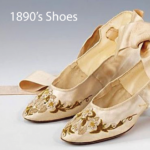 FOOTWEAR
FOOTWEAR
-
-
- High heels were a necessity for any woman wanting to keep her dress clean
- The modern high-heeled boot appeared at this time
- It had evolved from the “clog” decades earlier in the time of Henry VI, & the loose heeled boot of a decade before
- The higher back of the “heeled clog” threw the weight forward, emphasizing the forward balance of the “S” corset line
- High tab front shoes with a large buckle were in style in the 1870’s, went out, & came back in style in the 1890’s
- Except for the shape of the heel, it was almost a nostalgic replication of the shoes of exactly 100 years prior
- Heeled shoes were named such as “Cromwell”, “Colonial”, & “Moliere”
- Suede, leather, lace, & metal were used to fashion the shoe & to decorate it
- Suede was new to the market in 1890, & was available in a few pale shades
- Boots, previously worn strictly for riding, were commonly worn for sports, work, or rural pursuits as well as travel
-
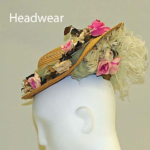 HAIR & HEADGEAR
HAIR & HEADGEAR
-
-
- Hair was fastened around pads with feathers & silk “frou frou” on enormous hats
- In 1890 hair wasmuch the same as in the 1880′
- This included styles with curled or frizzled bangs over the forehead, as well as hair swept to the top of the head
- After 1892, hairstyles were increasingly influenced by the Gibson Girl
- Hair became looser & waiver after 1895, & bangs gradually faded from high fashion
- By the end of the 1890’s the hair was often worn in a large piled mass with a bun at the top of the head. This style would predominate until after 1910
- Hats were described as very large & covered with “the bodies of dead birds”
-
 —— ACTUAL GARMENTS FROM THE BEGINNING OF THE ERA ——
—— ACTUAL GARMENTS FROM THE BEGINNING OF THE ERA ——
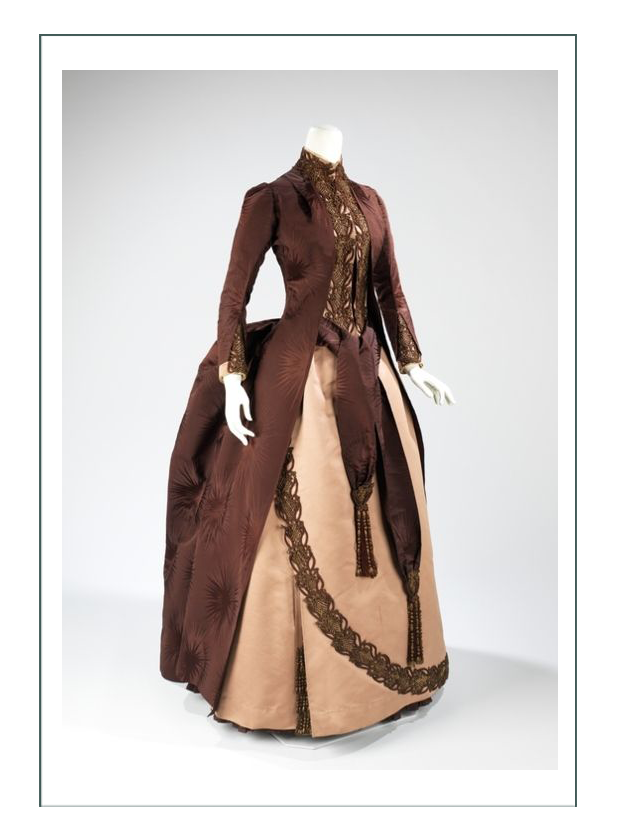
—— (above) “Era Begins with Biggest (2nd era) Bustle 1888” ——
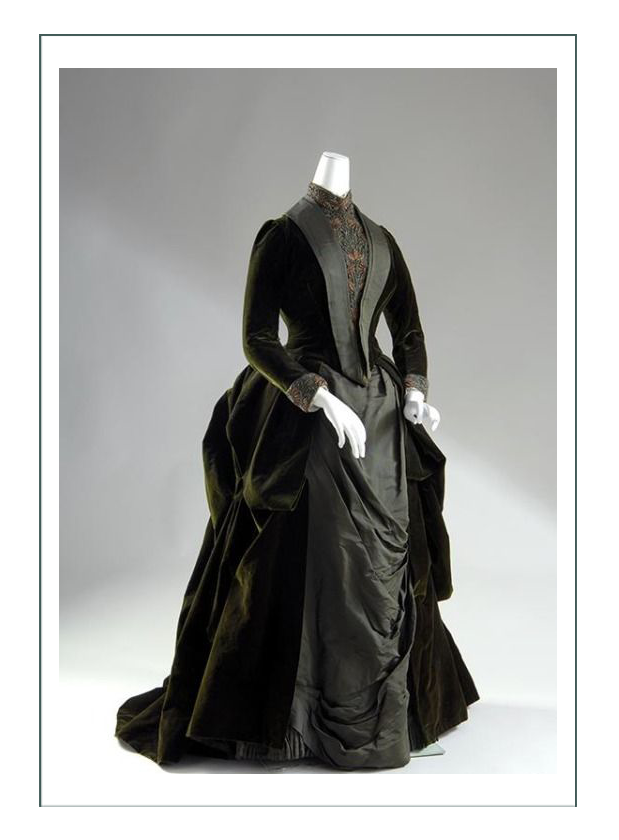
—— (above) “Winter Dress 1888” ——
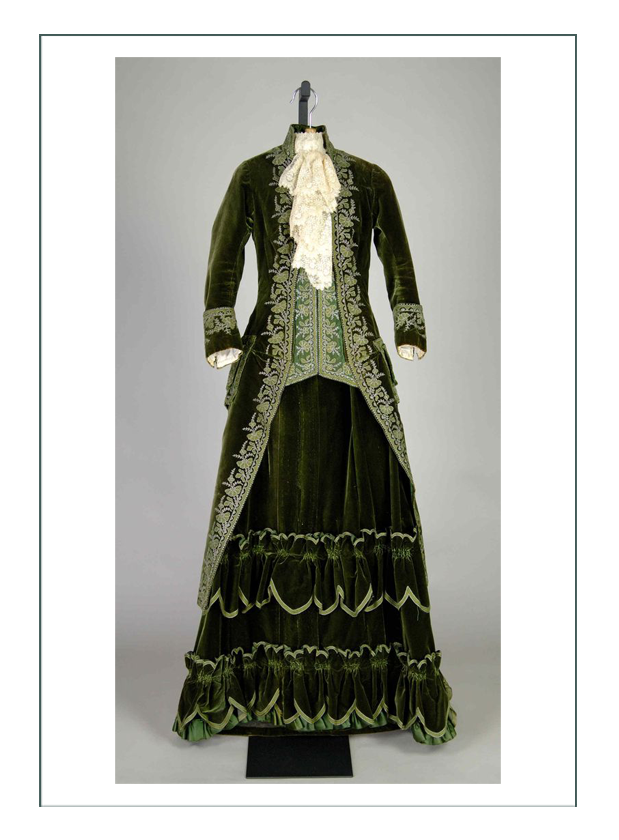
—— (above) “Walking Dress 1888” ——
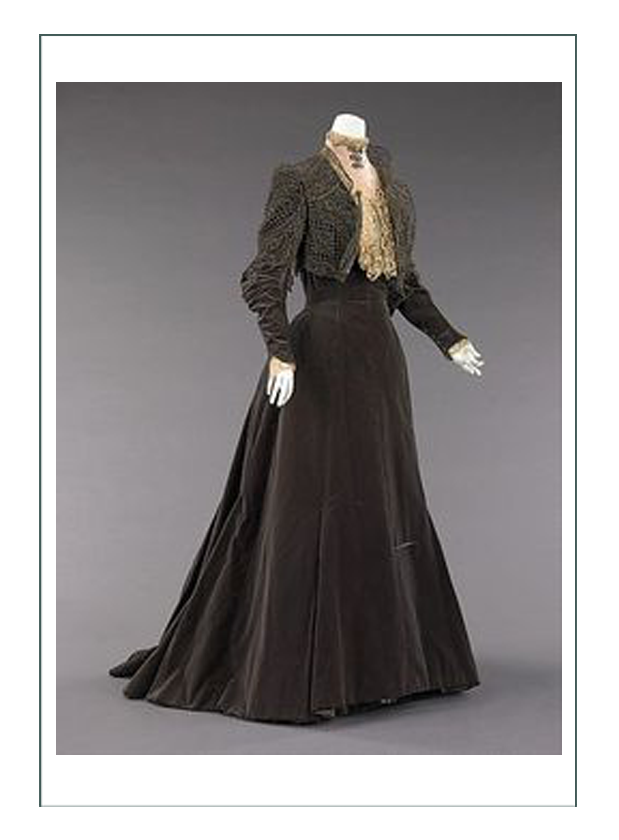
—— (above) “Worth Tailored Gown 1889” ——

—— (above) “Riding Habit 1890” ——
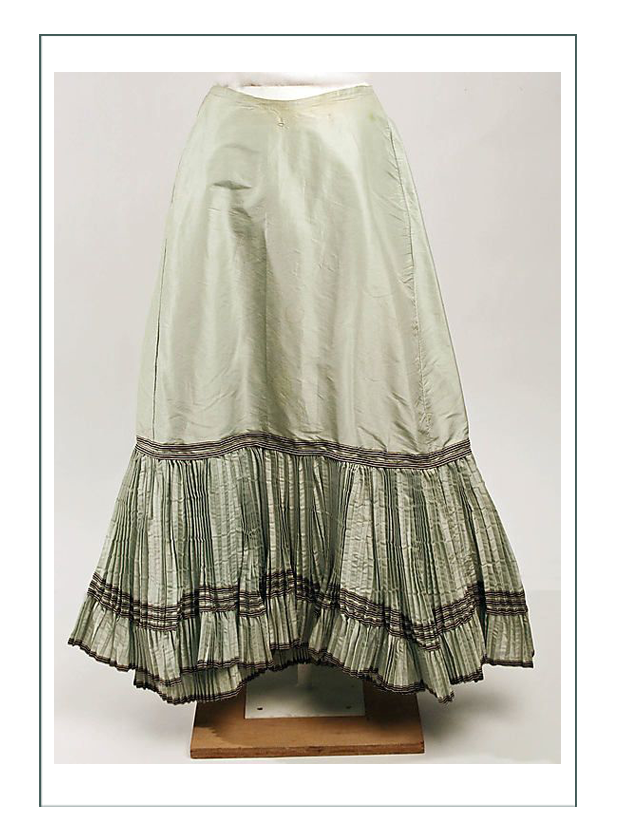
—— (above) “Petticoat 1891” ——
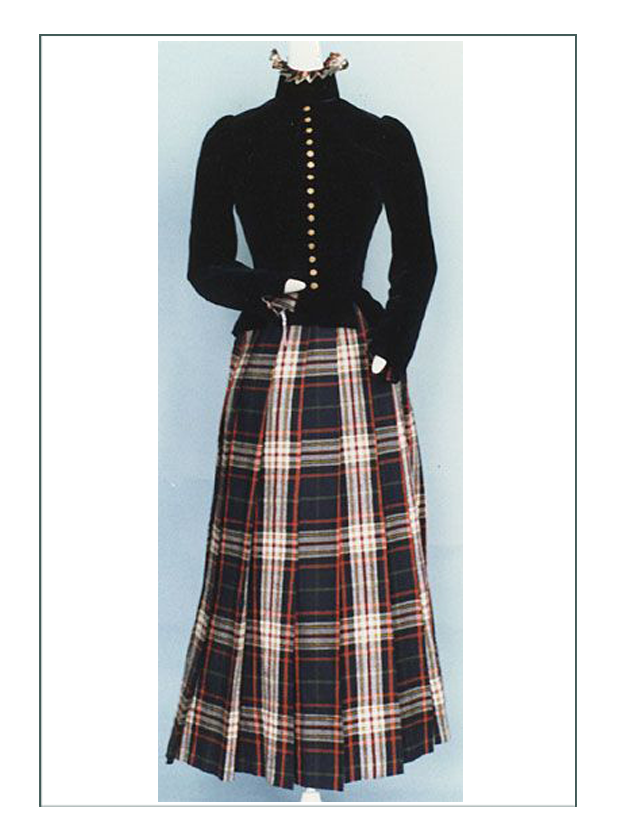

“Pioneer Spirit”
The American West, starting with photographic records, women who settled & worked the American frontiers influenced others worldwide. Mary’s character, living between a well settled and somewhat urbanized society and a newly settled west, would have more access and knowledge than most about the day’s fashion. She might have access and availability when she was inWisconsin, but most likely had to do without most things when in Wyoming.
—— THE ERA IN BRIEF ——
Women of the American Old West had to be resourceful to cope with the elements that surrounded them: the harsh conditions, lawlessness, & living in an age where there were few amenities. Some women took to the gun as readily as any man, while others made lives for themselves apart from dignified society. But for women who made the trek west with their families, their lot was in raising children, running a household (that included food processing, candle & soap making, spinning, weaving, knitting, etc.), establishing schools & churches, & occasionally, warding off Indian attacks. Some were deeply involved in human & voting rights (the suffragette movement)

—— EXAMPLES OF WESTERN FASHION 1840-1914 ——
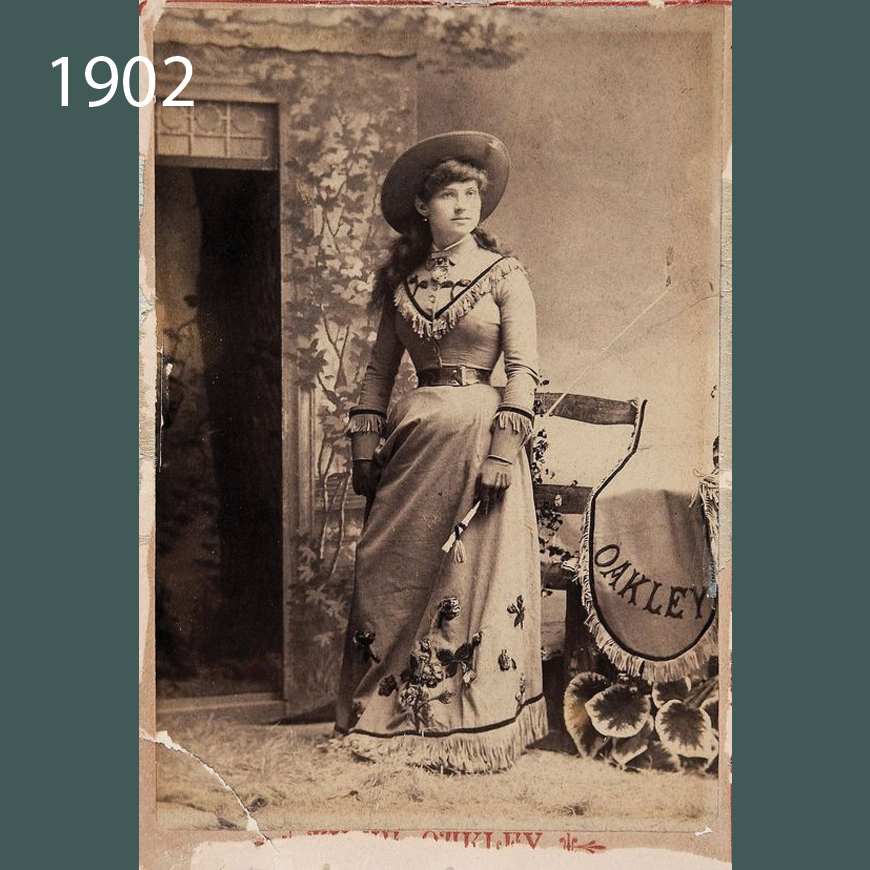
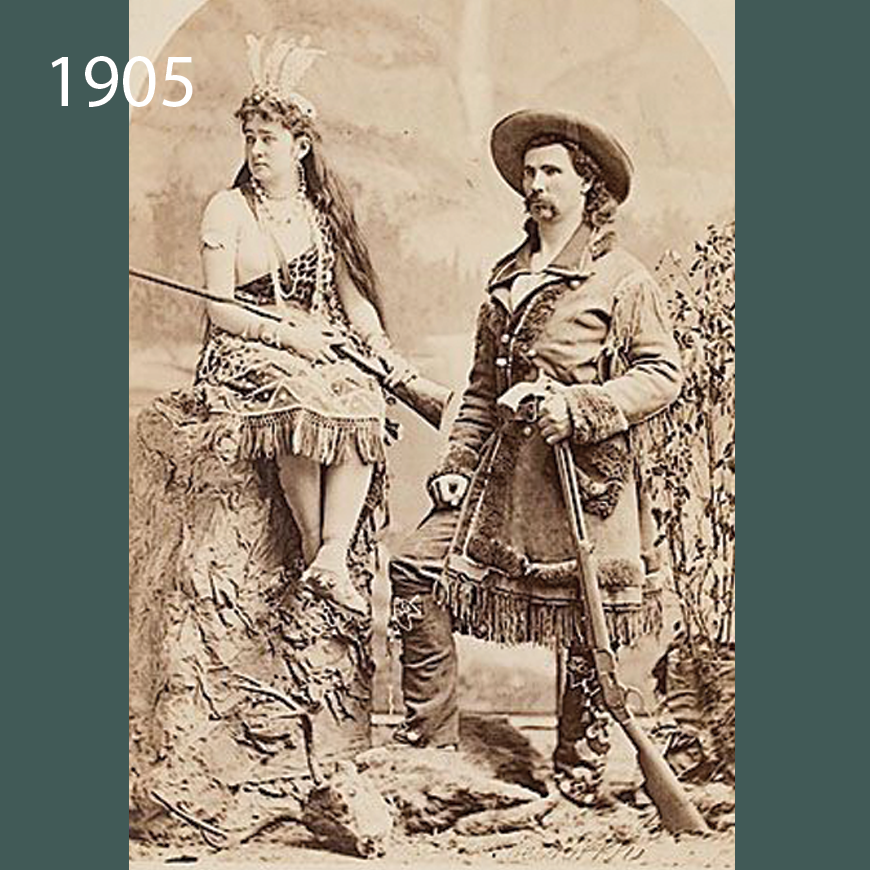
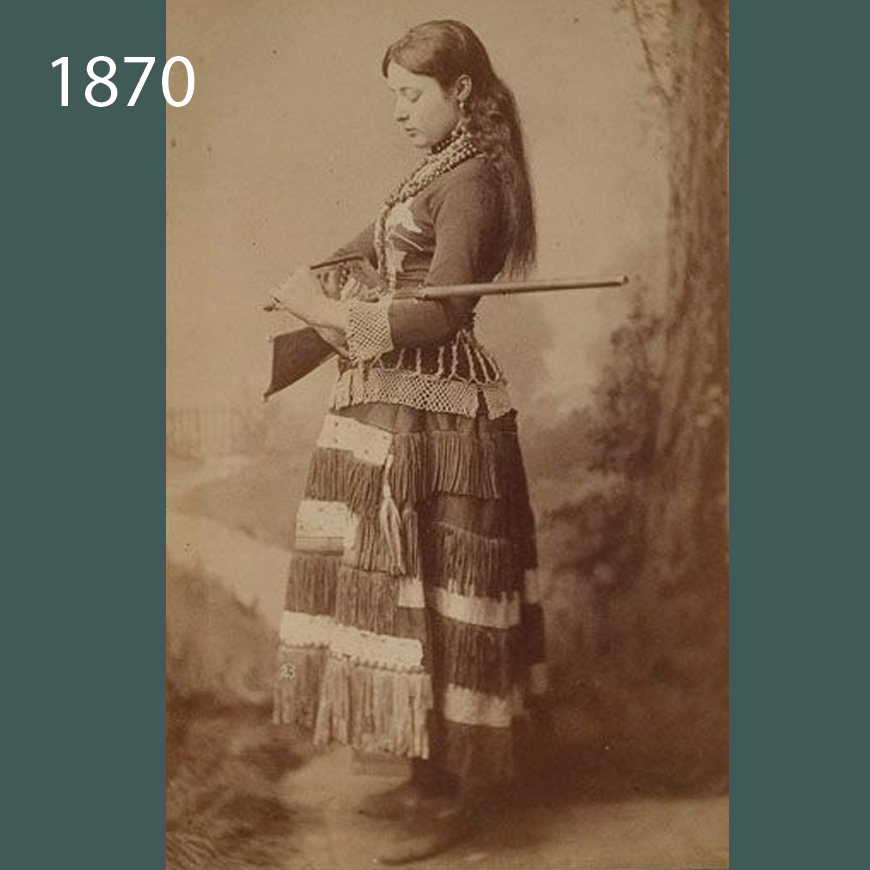
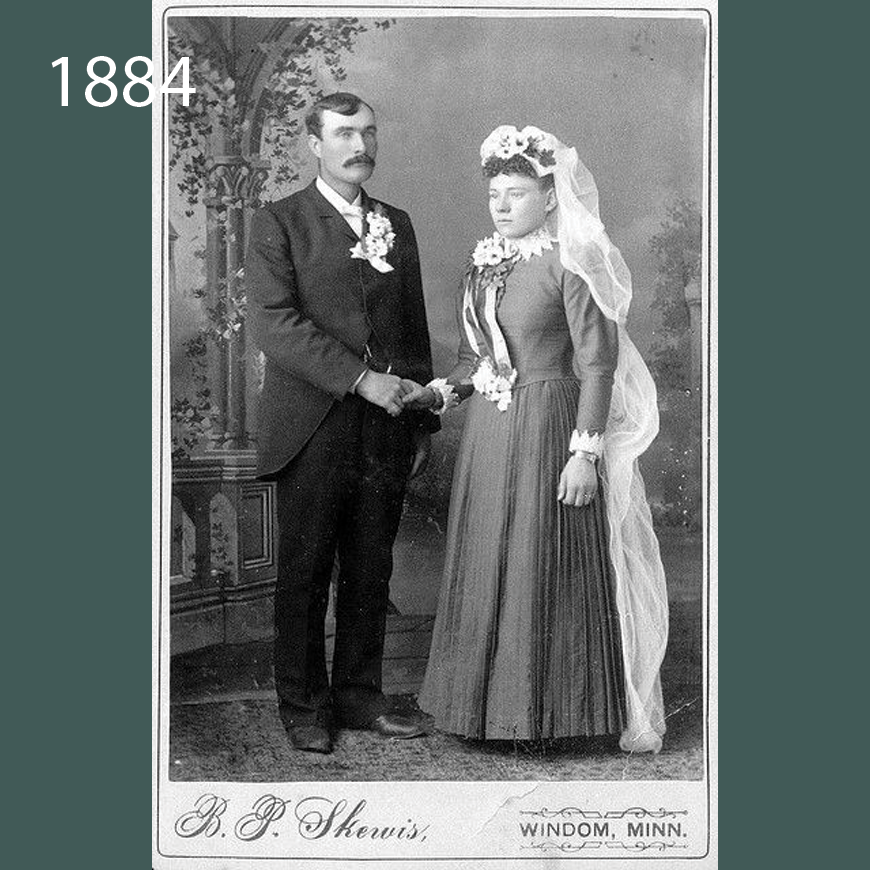
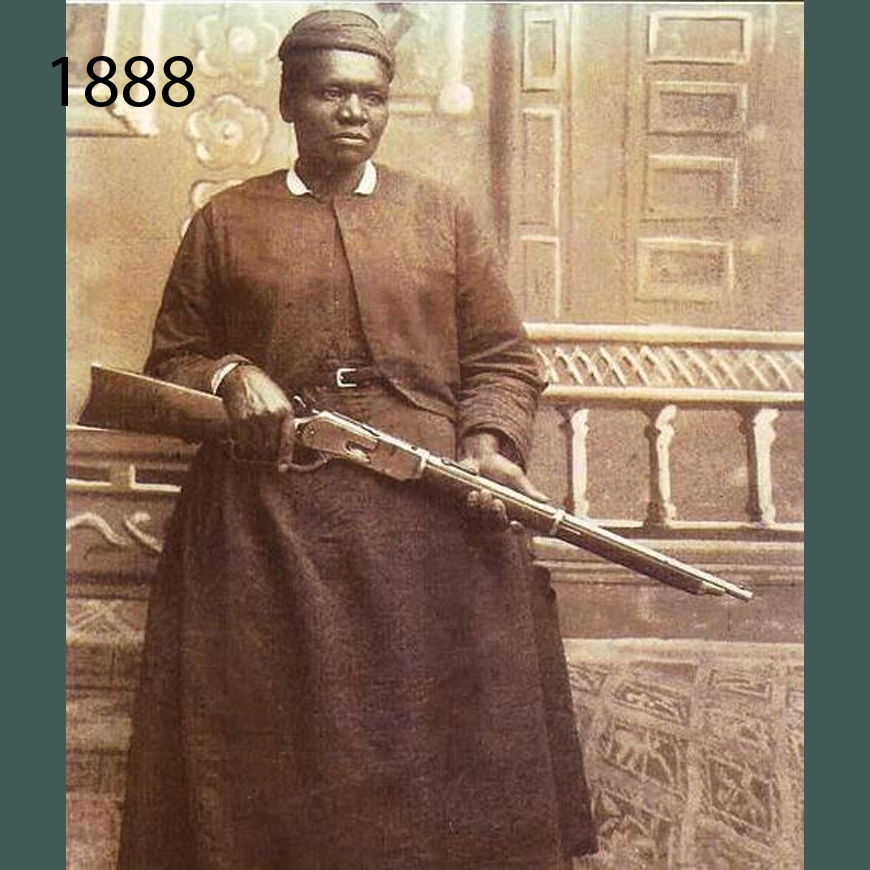
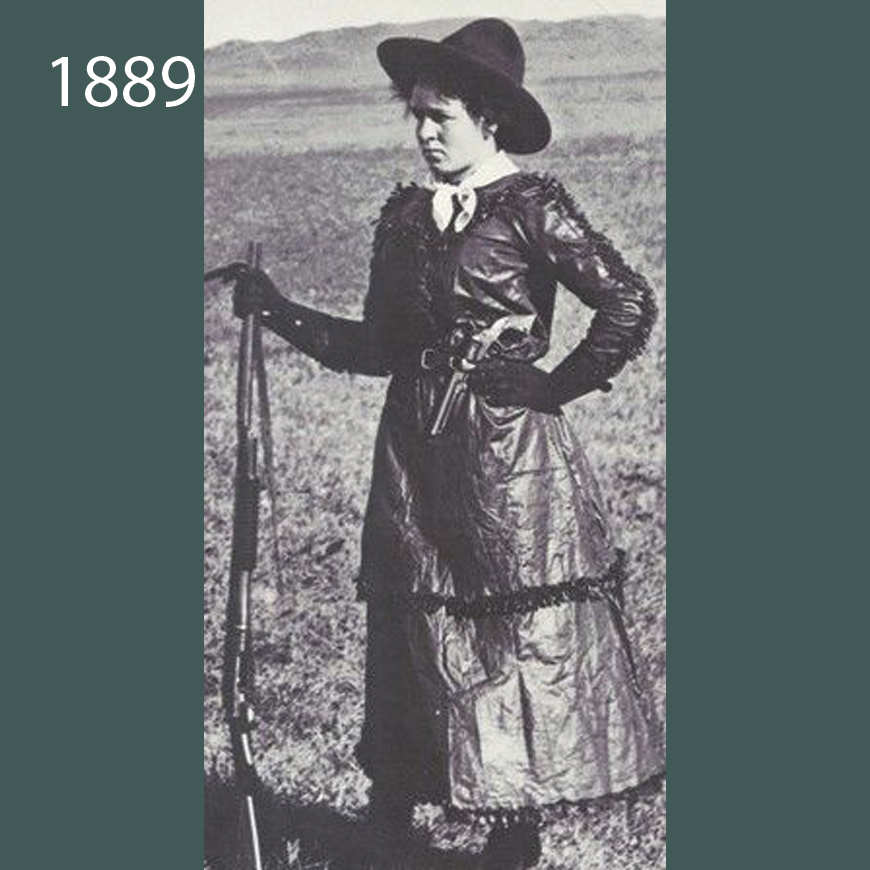
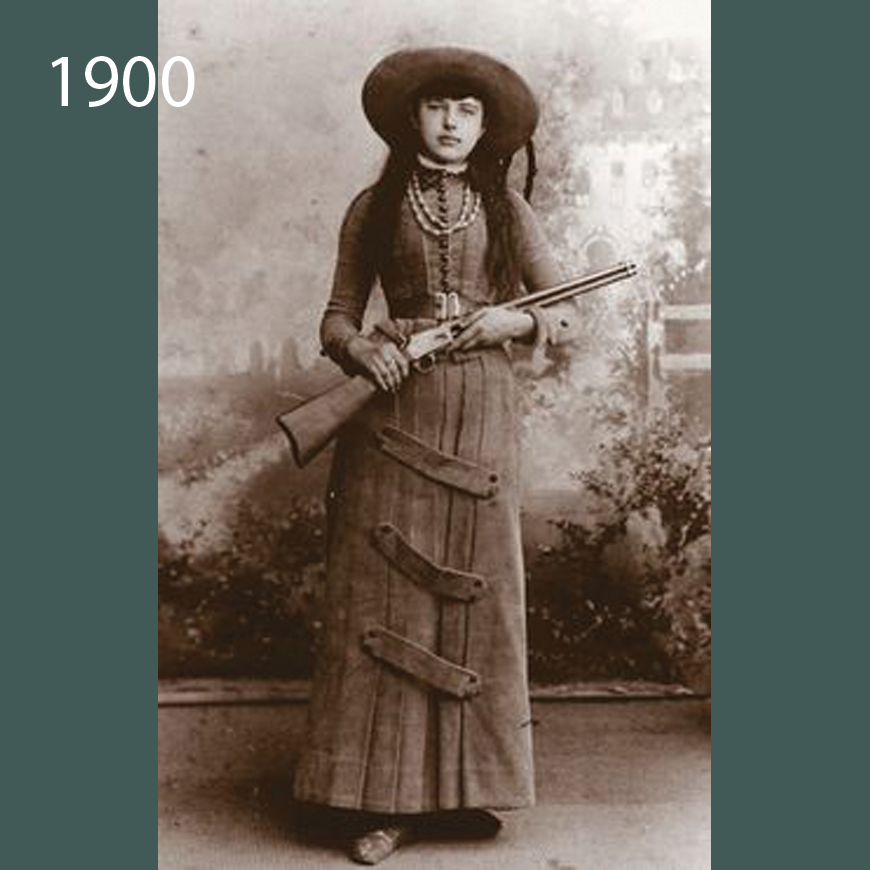

—— INTERESTING FACTS ABOUT THE OLD WEST FASHION——
- Public performers such as singers, dancers, & sharpshooters could appear in short or split pants in the 1800’s, but it was indecent for any other women to do so
- Since there were not fashion magazines, people could only guess what was going on in the American west
- No one knew if American women created their own fashion trends, or carried those from the East
- Most women in the west were typically 2 years behind in fashion
- It was assumed Western prostitutes were dressmakers by day, and plied their trade at night
- The Stetson high crowned wide-brimmed felt hat nicknamed “The Boss of the Plains” was American born in 1876. Available in black or white so you could pick if you wanted to be the good guy or the bad guy these were worn by cowboys and cowgirls. They cost $20, about what a good cowhand earned in a month at the time
- Women wore denim jeans just like the men did in the West

—— WESTERN SETTLEMENT & FASHION ——
Native Americans & ancient tribes lived on the North American continent long before European & eventually others from around the world emigrated to the continent to build what would become the United States of America. The Mayflower brought the Puritans in the 1640’s.
The next “wave” of immigrant women into America was in the early 1700’s – more specifically the 1730’s-1740’s during political & economical strife in Scotland & England. The English, holding “ownership” of the American colonies at the time, predominated settlement in the east. For this reason, most early women settlers & immigrants were of European descent.
There were two subsequent large European migrations after that; the first to the east coast, & the second of more direct affect to settlement of the “West”. In the 1880’s women from Germany & the Netherlands came down the Great Lakes to land in what is now Chicago. Some went south towards Missouri & Kentucky, but most settled nearby in the Midwest.
Midwesterners from what is now Michigan, Wisconsin, Minnesota, Iowa, & Illinois were among the great numbers that continued to move on westward in the 1880’s & early 1900’s. By 1862 when the first Homestead Act offered 160 acres in what would become Montana & Wyoming to anyone who would live there for 3 years, people jumped at the chance whether they knew anything about ranching or not. Iowa had run out of farmland for their 3rd or 4th sons. By 1910, when the government offered 320 acres instead, settlement began in earnest (& in Wyoming).
It was at about that same 1870-1910 time period that religious groups such as the Mormons traveled West. Many of these groups, including the Irish & Chinese who came to work on the railroads, were often staying temporarily or just moving through the West to get to California & Pacific coastal regions. Those of many different cultures did stay, although documentation of their influence on fashion is difficult to find.
When history talks about “Old West”, it refers to geographical regions west of the Mississippi River, north to the Canada border, south to Mexico, & west to the Rocky Mountains. Nebraska, Kansas, the Dakotas & anything west of the Mississippi River was still considered to be the”Old West” or the “Wild West”. Iowa & Missouri, sitting on the Mississippi, were “West” too.
There were relatively few women of European descent west of the Mississippi prior to the 1830’s that can be tracked for fashion trends, & assumption can be made that in the years 1840-1914, women were predominantly of European descent, regardless of skin color. Until the common usage of the camera in the late 1840’s, little was recorded of what women were doing (& wearing) from the Mississippi westward.
“West” seems to mean the legends & tales of the time from 1840-1915 – from when the first Europeans arrived in some force to the advent of World War I. It’s considered to have been the time & place of cattle, outlaws, trains, & bordellos. The challenge is to get behind that to find out what real & “regular” people were doing & wearing.
The only firmly recorded history seems to be of of prostitutes & fallen women who fell on the profession of necessity to survive, or followed the gold rush of 1849. There is record of outlaws & cattle women, but usually in papers outlining something terrible that happened. Land records of Homesteading & business ownership document some facts. Mostly, we must rely on verbal stories, legends, diaries, periodicals, or artifacts to under the lives – and clothing – of the pioneer women of the 1840’s to 1860’s before the railroad became the means of crossing the country in the 1870’s.
For purposes of our depictions we begin with the advent of the camera in 1840. Prior to that, we must make assumptions based on paintings & sketches of artists who explored the West, or draw conclusions based on observations about history & emigration; the movement of ideas & materials from one place to another.

—— FEW FACTS & A LOT OF FIGURING ——
Fashion of the Old West is based on (in this order): real articles of clothing, photographs, portraits, paintings by Western artists, sketches, journals such as explorers or land records, obituaries, diaries, newspapers, magazines, notes in Bibles property ownership records, word of mouth, stories, & legends. Some, like the record of how many dresses a woman left in her will, are accurate. Others, like the story handed down by your great-grandmother or the story of Calamity Jane & General Custer, have to be interpreted.
Design & depiction of fashion of Western America fashion must put all those odds & ends together, along with what is known about influences, environment, availability, attitudes, culture, values, & assumptions about the person or people being studied & depicted. There are whole professions, notably Anthropology, which study these factors. Yet other professionals such as Museum Curators spend whole lifetimes gathering & studying the clues of fashion.
For our purposes for depiction, we must trust the research of those professionals, & draw the best conclusions we can based on which facts are known, but add Grandma’s stories to breathe life into our depictions. Our projects will assume fashion for depiction is based on one of the factors below.

A) Fashion and/or the concept of fashion of the day was physically carried from the east coast (originating from the same influences as Easterners), & then modified or adapted to suit the culture, time, place, or activity;
This starts with the assumption whatever the current trend of the east is being carried west, & will focus on those factors which would cause them to be modified; e.g. materials, patterns, or communication unavailable;
It means fashion will almost always be 1 or 2 years out of style compared to the east;
Designs based on this assumption will end up being modifications of whatever was in style in the east a couple of years prior to the depiction.
B) Clothing was origined out of local materials; e.g. furs, leathers, & therefore based on the same influences as men’s fashion such as evolution of the cowboy ensemble, almost strictly for function;
These projects will be researched & developed per project by specific region, working with our subcontractors who specialize in indigenous materials;
The American Cowgirl in particular demands research into male clothing & its adaptation for women.
C) Fashion design & clothing was a combination of above; e.g. western innovations like denim jeans which arise out of functional need; yet using modern technology of fabric, dye, & production that comes from the east which combines local availability of fur, skin, or locally made fabrics or materials (such as spun or woven yarn) with those of mass production or import;
This will be the result of very specific character of research, since it combines extensive historical data as to fashion of the day PLUS the specific geographic region including all aspects of the time & place;
It cannot be generalized.
D) Design & construction of garments comes of native, ancient civilization inspiration, influence, or actual use;
Silhouettes intentionally choses not to develop “D”, as the world of ancient & Indian cultures is vast & complex, & can take a lifetime, although influences of such will be considered with characters where that is pertinent;
We will refer customers to appropriate professionals who can help them with this.

—— WYOMING – REPRESENTATIVE OF THE WEST ——
Because the history & settlement, & therefore women’s fashion of the American West is as vast & wide in concept as it is in miles of mountains, lakes, & prairies, we will focus on Wyoming as our prototype for costume development. Wyoming is the icon of the Old West; the standard by which settlement of the western US is gauged.
A STATE OF EQUALITY
Wyoming was also the first place in the entire world where women finally gained full emancipation, & therefore represents the summation of all the eras around the world that we have been studying. It was here that over 200 years of gradual reform & activism by women around the world came to fruition quickly & of necessity in typical Wyoming style which doesn’t “beat around the bush”.
Wyoming is called “The Equality State” because immediately at its establishment as a territory in 1868, women had the right to vote. When it became a state in 1890, women still had the right to vote, long before other states like Illinois had to be forced to comply with the 19th amendment in 1920.
The Wyoming territory was defined in 1848, & was established officially in 1868 as trade agreement following the Mexican-American War, & according to treaties over the period 1832-1890 with indigenous tribes of Arapaho, Bannock, Blackfeet, Cheyenne, Crow, Gros Ventre, Kowa, Nez Perce, Sioux, Shoshone, & Ute whose influence & presence remains today.
A Wyoming pioneer is considered anyone who emigrated into the territory between 1868 & when the state entered the union in 1890, & as recorded by the 1870 & 1880 US census and/or land ownership records.
TRANSPORTATION CENTRAL
The many pioneer trails including the Oregon, California, & Mormon Trails passed through the lower half of the state. The Mormon Trail, established in the 1830’s along the south of the state saws 350,000 emigrants traveling on it by 1847. By 1851, the southern parts of the state had become populated with pioneers.
When the first Transcontinental Union Pacific Railroad reached Cheyenne, WY in 1867, the state started to be populated. The Branch spurs northwards to the ranching & coal mining areas of the north took many pioneers north, but there was never a “boom” in the settlement of the northern area. The railroad promoted settlement of the region in order to bring families, merchants, & trade so that they could handle the increased trade of goods coming from the east, & cattle going to the east.
1859 saw the development of the Bozeman & Bridger Trails when gold was found in Montana. While the gold played out quickly, the trail became a heavily traveled route for cattle drives.
CONFLICT & SETTLEMENT
The Powder River Basin, through which the Bozeman ran was central to the state. The area had been agreed upon by treaty between the US government & the Native Tribes to be completely left alone as it was their sacred hunting ground. Intense & continual conflict ensued between immigrants moving in or passing through, & Natives of the region.
Treaties made at that time to settle that conflict were later broken by the new immigrants, causing yet further conflict between Natives & settlers in 1876 on the Montana & Wyoming border to the north. Many forts were established at this time at locations of trading posts to interface the conflict.
The Homestead Act of 1862, which gave 160 acres of land free to anyone who would live on it for a continuous 3 years, brought settlers from the east. Many were teachers or merchants, & did not know what they were doing. The huge ranches that had already been established had claimed general rights to open grazing, & these ranchers did not like the small farmers & ranchers using their water resources.
From 1889 to 1893, the large ranchers organized into a political force to drive the small settlers out. The US cavalry was brought in to settle the disputes, but much Wild West history of movie & literature depiction was made of this era.
The 1860’s to 1900 were known as a time of outlaws. Notables were Butch Cassidy, Harry Longabaugh, & the Hole In The Wall Gang. Many of Wyoming’s Notable Women were a part of the outlaw world, yet many more were on the opposite side of lawlessness.
Click here to go to Mary’s Design Development page (next)
Click here to go to Mary’s main page with the completed Project
Click here to go to Mary’s Historical Context page
Click here to go to the top of this page


